Regardless of the size of the entryway in an apartment, it must have space for outerwear and shoes. However, if you just leave the shoes on the floor, visual and real disorder quickly forms. This article will discuss why a shoe cabinet is necessary in the hallway, how to choose the right model, and where to place it for convenient use.
Choosing a Shoe Cabinet for the Hallway
Advantages Varieties
– Open
– Closed
– With a hanger Material
– Wood
– MDF or Particleboard
– Metal
– Plastic Choosing the size Where to place
– Next to the door
– Along the wall
– On the wall
Advantages
Organized shoe storage has numerous benefits:
- Space-saving. When shoes aren’t scattered all over the floor, it immediately creates more free passage space, and you can use this space for something useful: for example, a pouf or a hanger. The shoes will store vertically, thus utilizing additional useful area.
- Cleanliness and order. Firstly, even visually, the absence of various things on the floor looks better. Secondly, it simplifies cleaning and generally reduces the amount of dirt that accumulates even on dry shoes, drying on the soles.
- Convenience of getting ready. In a pile of boots in front of the door, it’s not always easy to quickly find the needed ones, especially if several people live in the apartment and each has more than one pair of shoes. In a shoe cabinet, everything is stored orderly: you can allocate a shelf or even specific compartments for each family member.
- Good condition of shoes. With proper storage, they are less likely to deform and, accordingly, will last much longer.
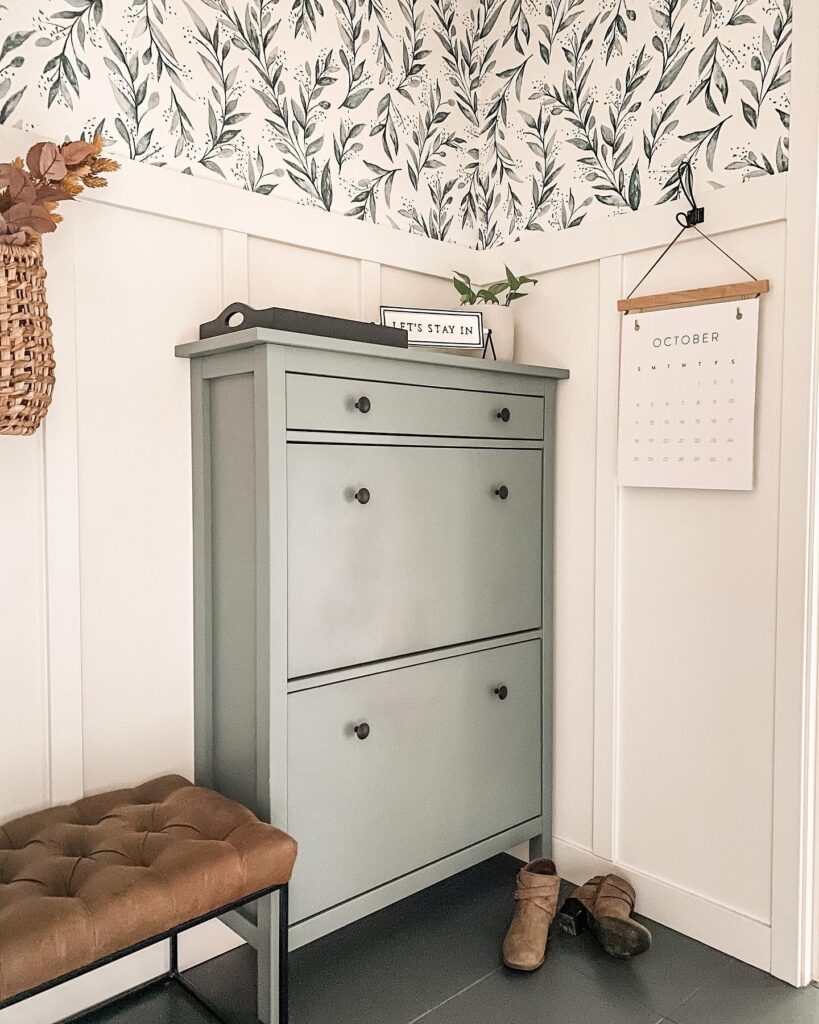
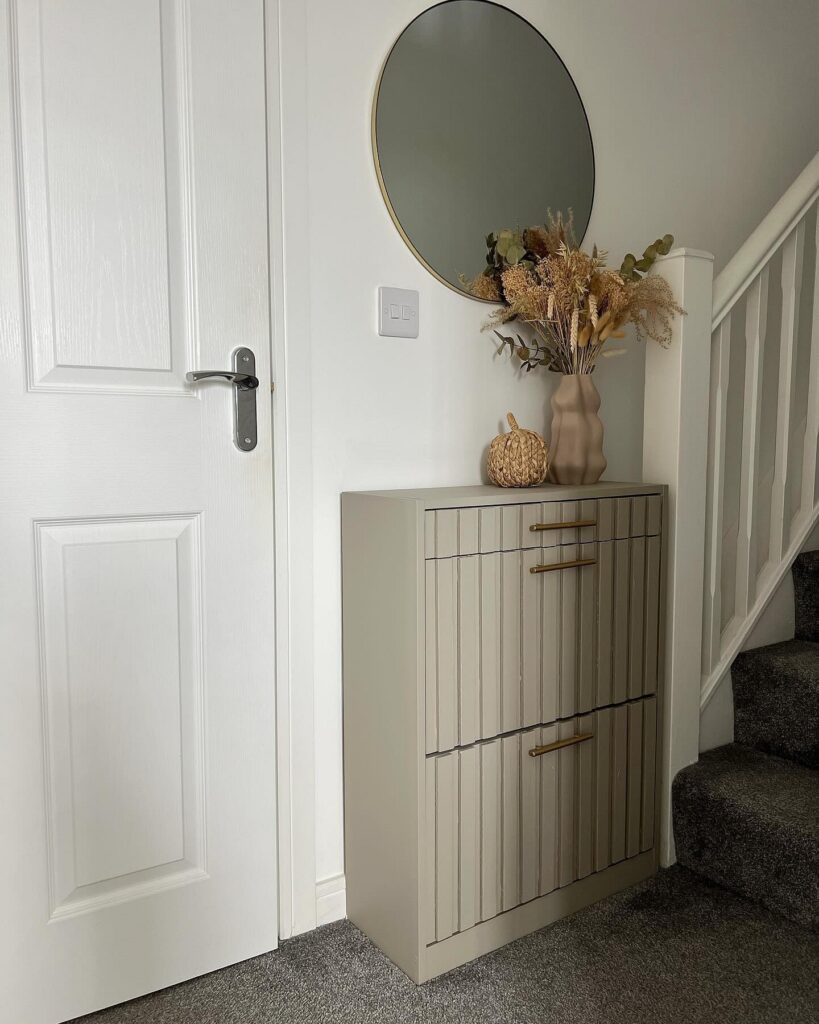
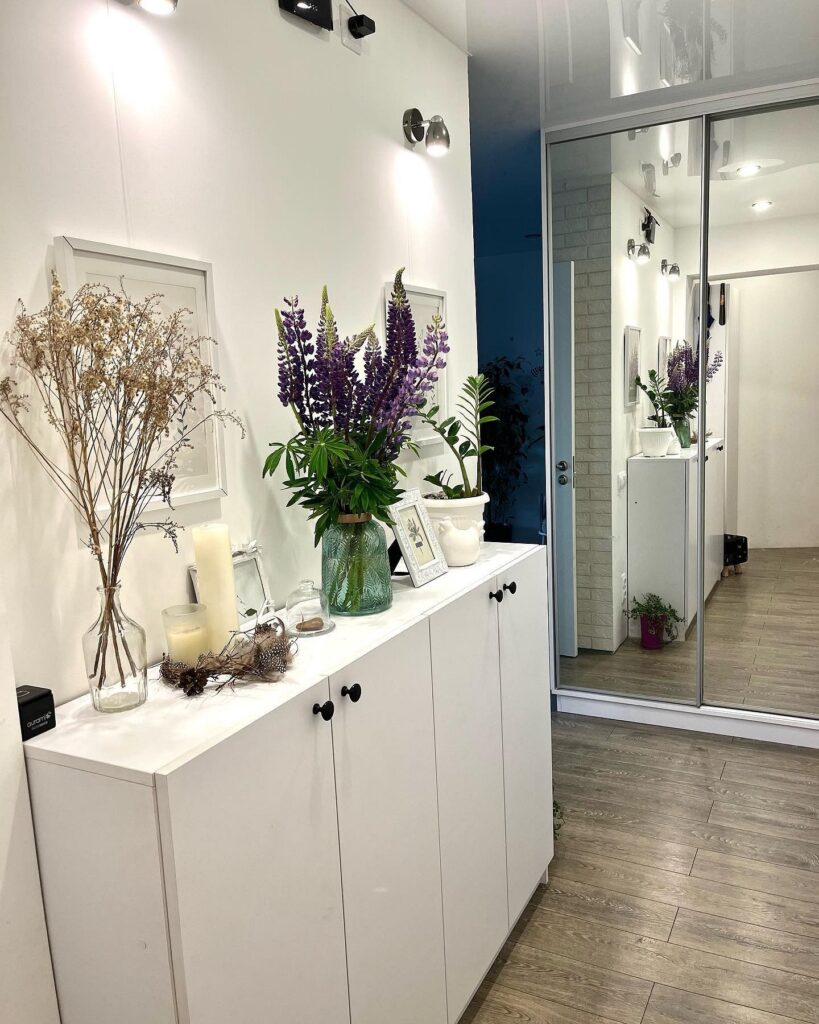
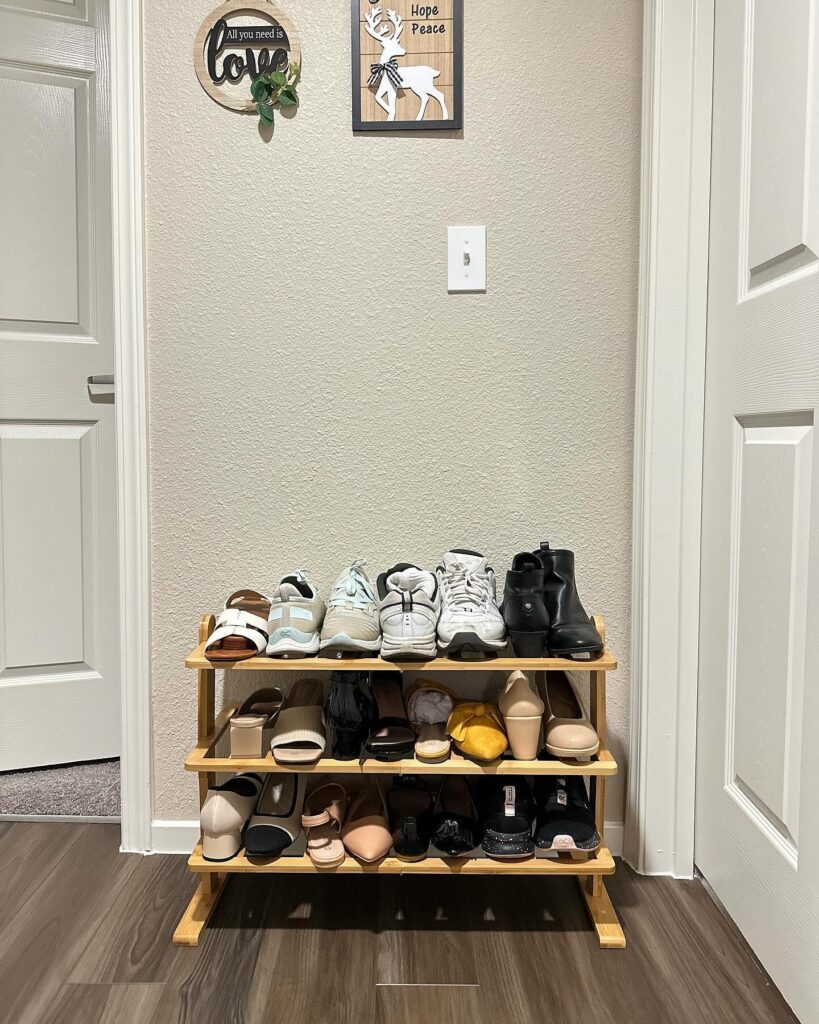
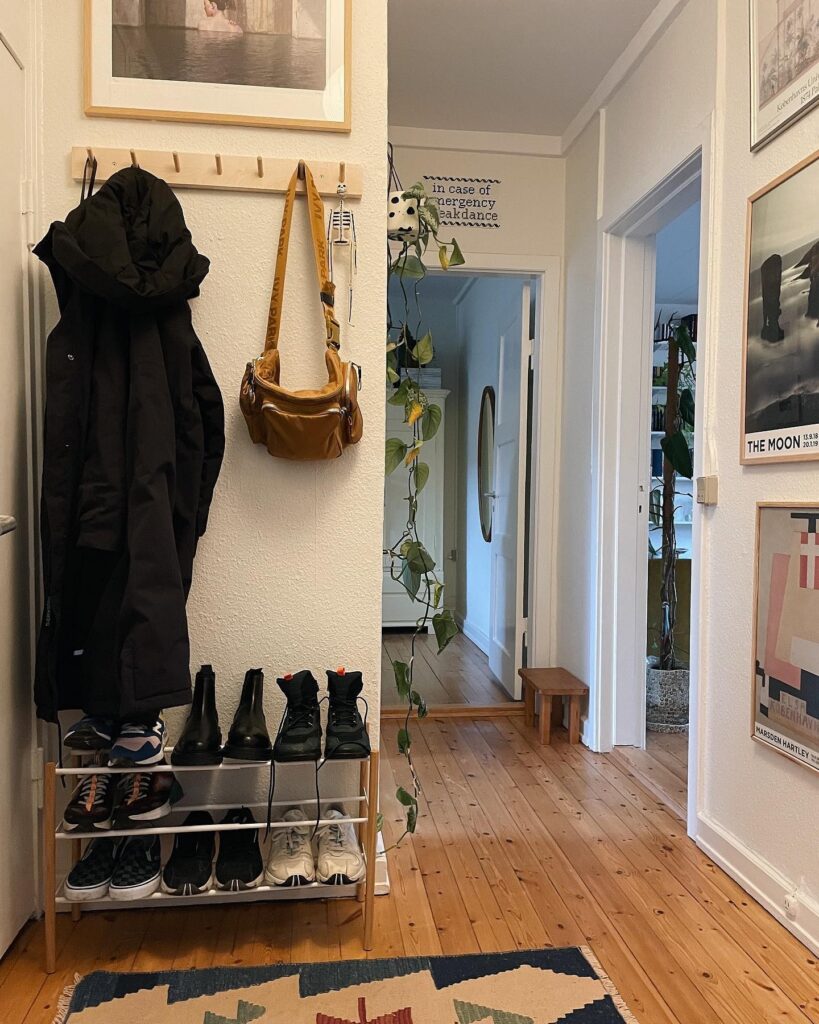
Types of Shoe Cabinets
Currently, there are dozens of different models that suit any space and type of storage. Here are the most popular options.
Open
This could be a special bench or rack (often the shelves are made at a convenient angle) or just any shelf that fits in size. The main advantages of this type of storage:
- Excellent ventilation, which prevents shoes from becoming damp, spoiled, and a source of unpleasant odors.
- Quick access to the needed pair.
- The ability to immediately see where everything is.
The downside is perhaps the potential visual clutter if there are many colorful pairs. Moreover, dirt and dust from the street will settle on the shoes and boots, so they will need to be wiped down regularly.

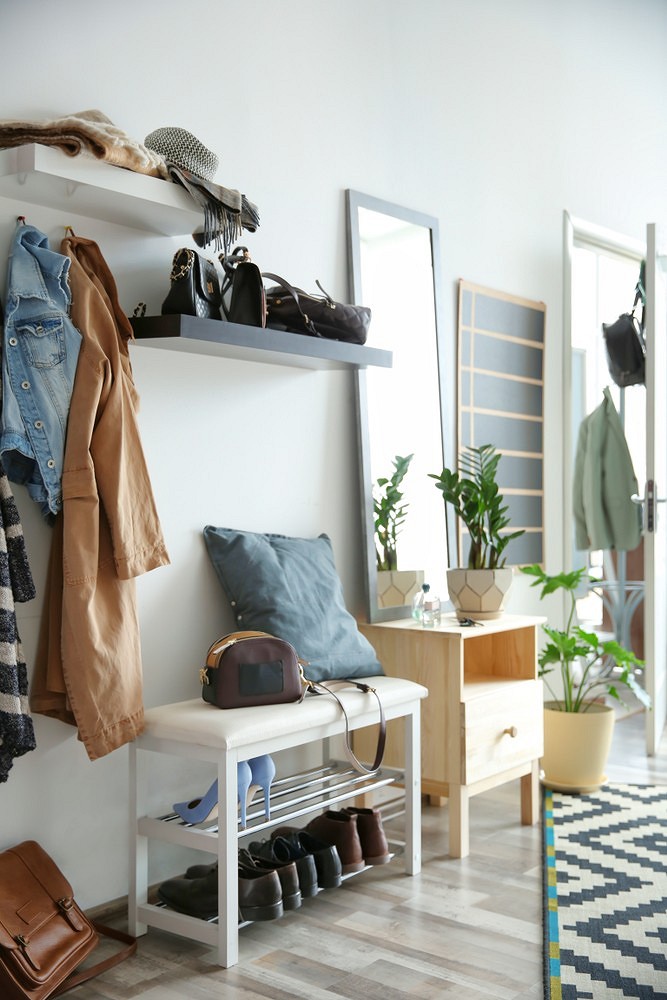
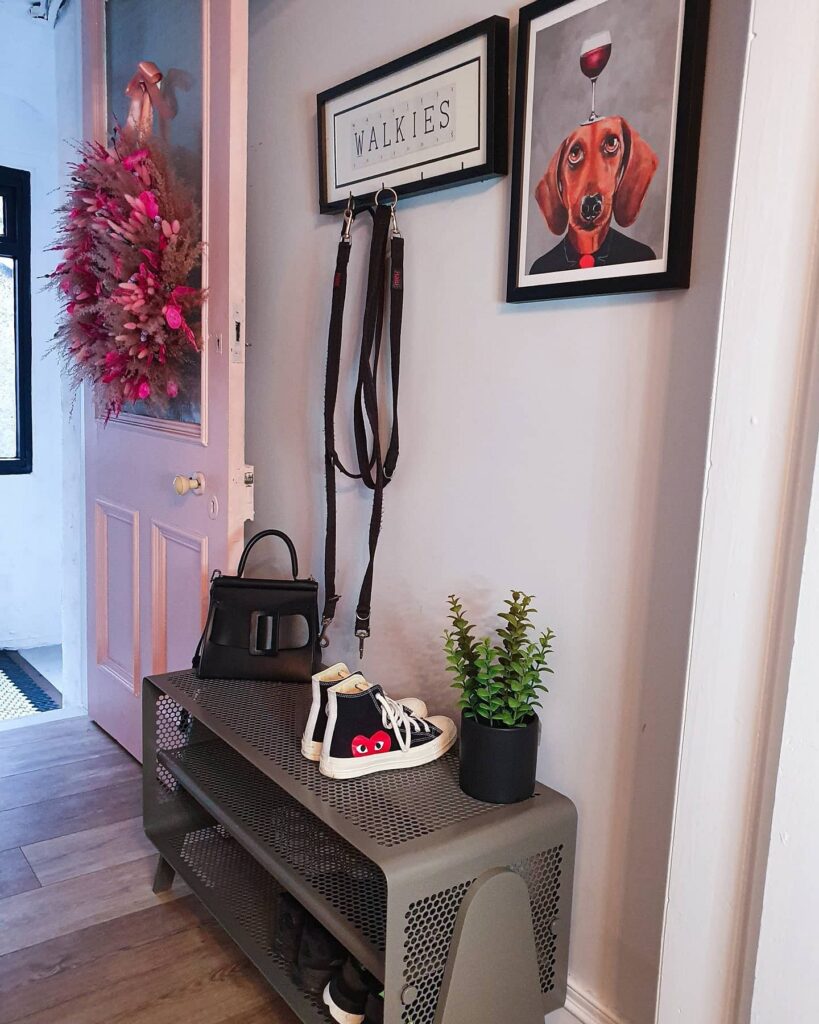
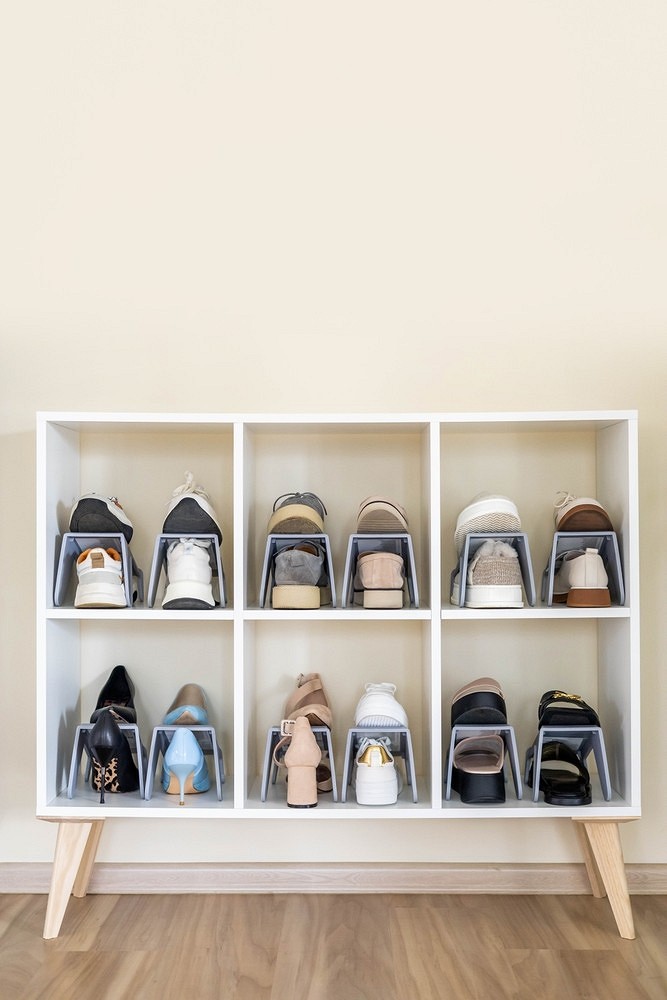
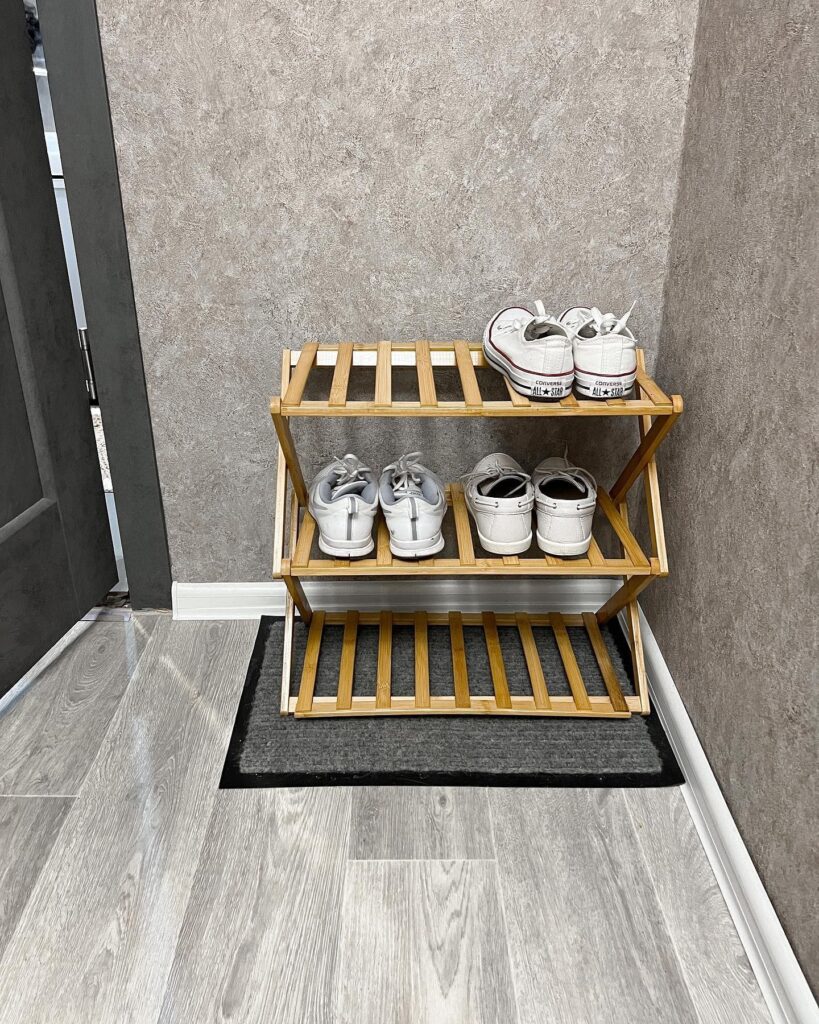
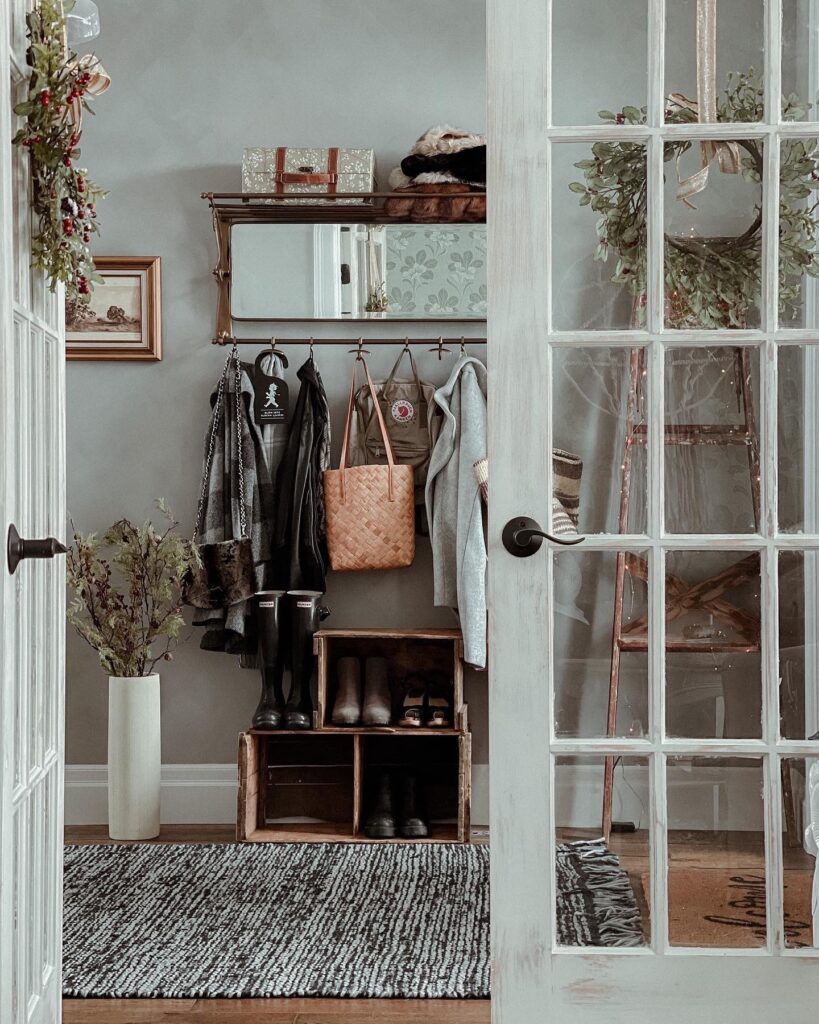

Closed Shoe Cabinets for the Hallway
These are stationary closed storage systems with drawers and shelves behind doors: consoles, mini-cabinets, cupboards, chests of drawers. They can be quite deep or very narrow, just over four inches. In addition to dimensions, closed models vary in the way they open. There are options with hinged or sliding doors, as well as flip-down doors.
If you’re choosing a spacious deep console, try to find an option with pull-out shelves – this will make it easier to navigate and access items stored in the back.
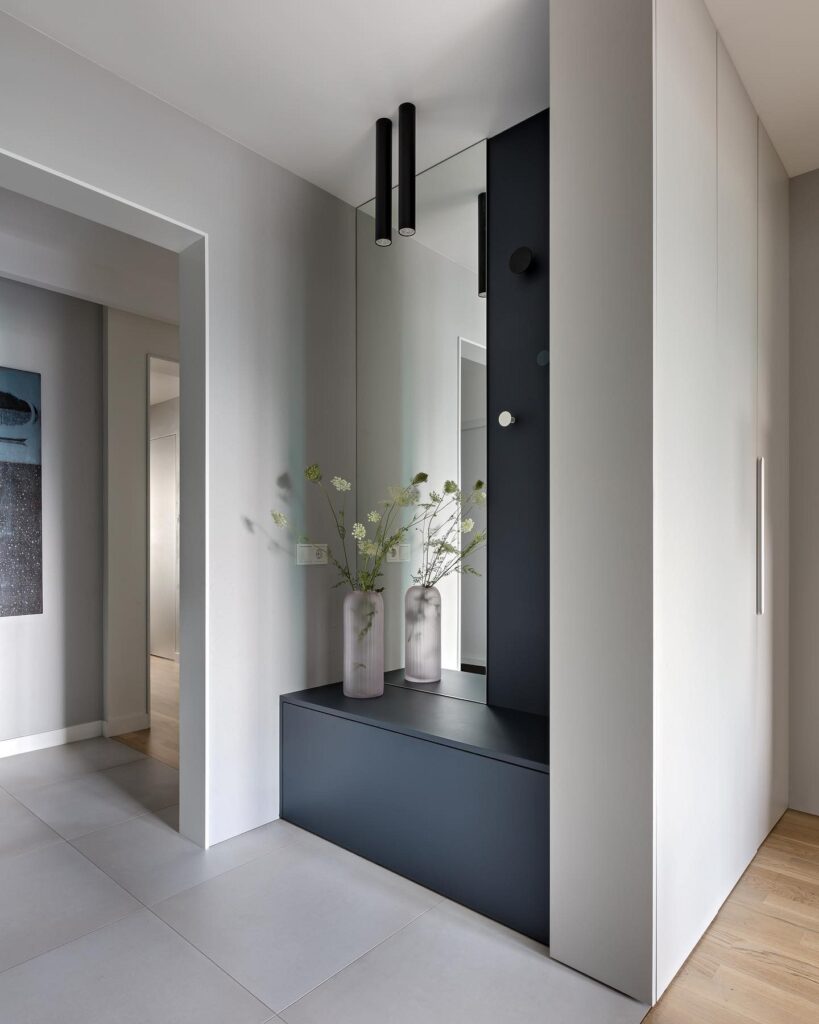
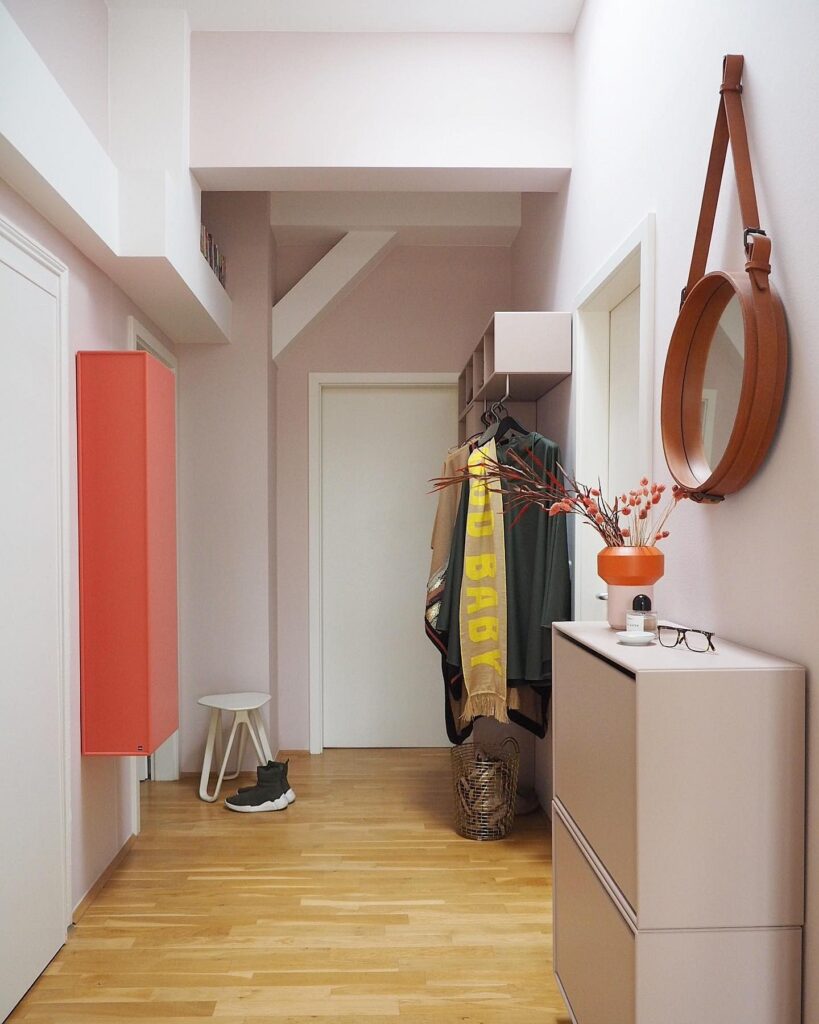
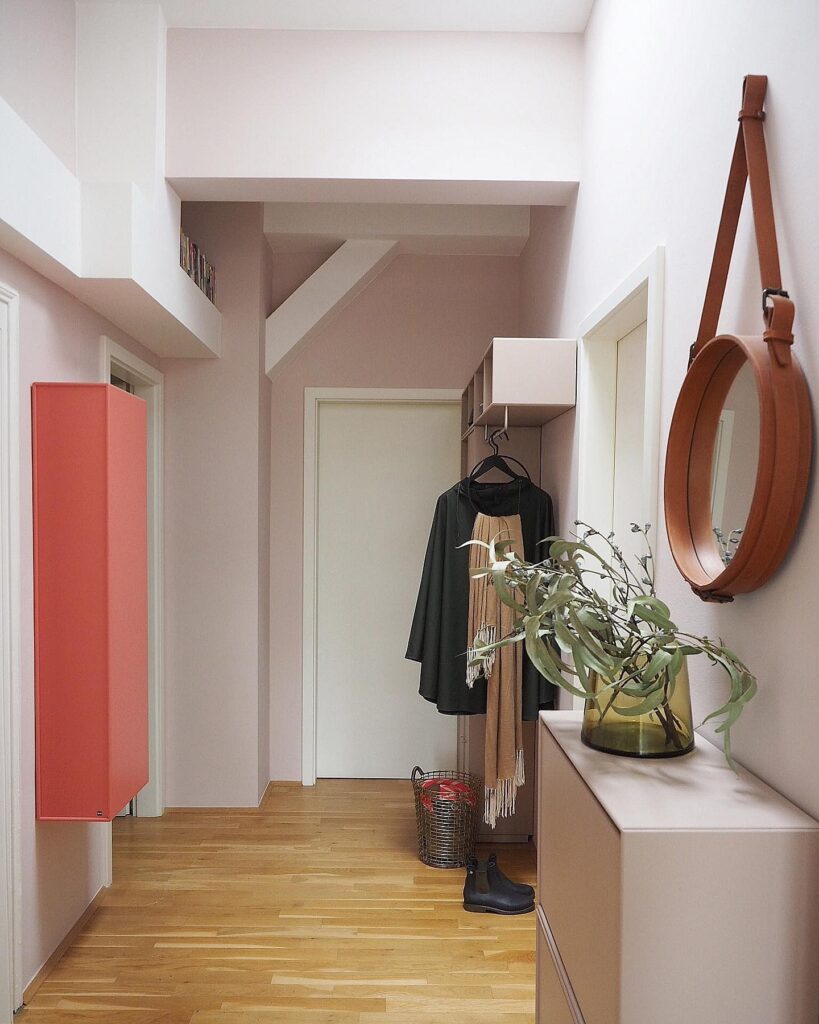
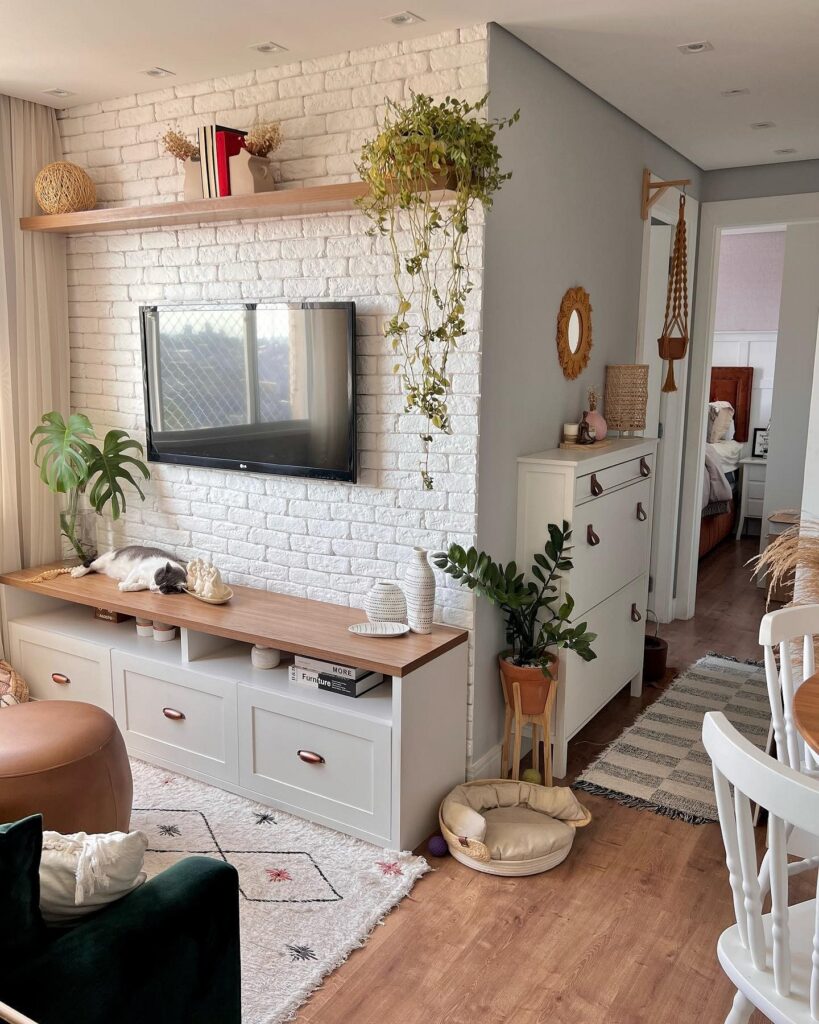
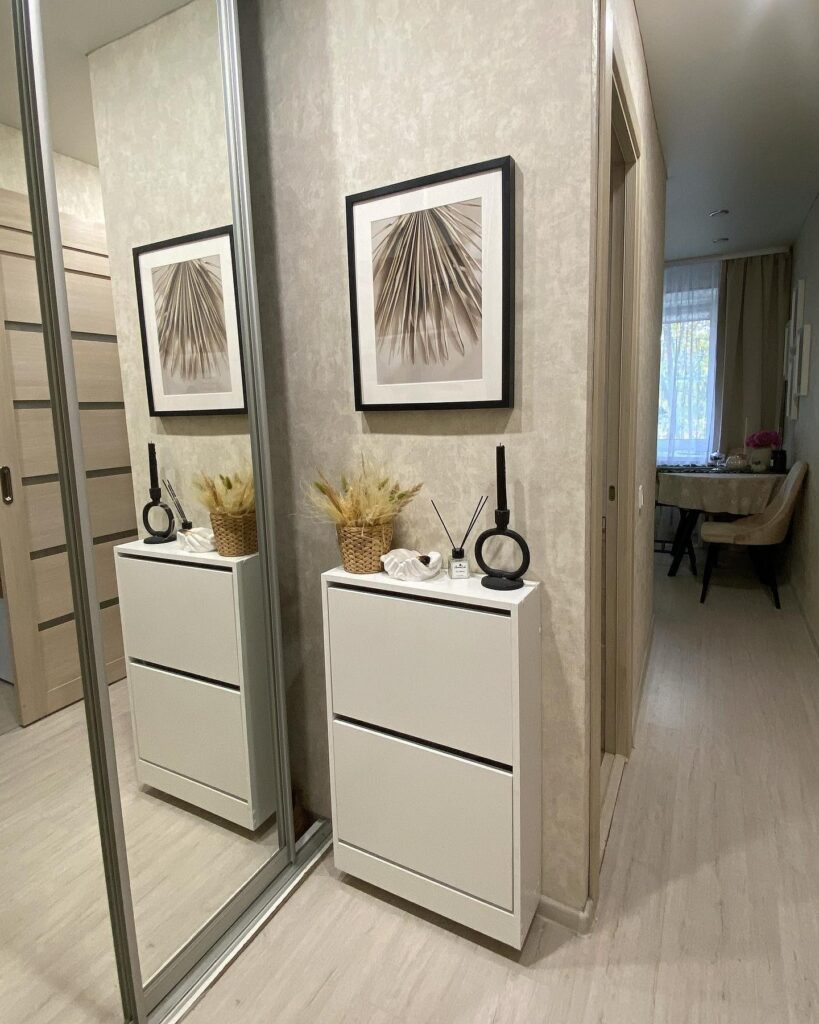
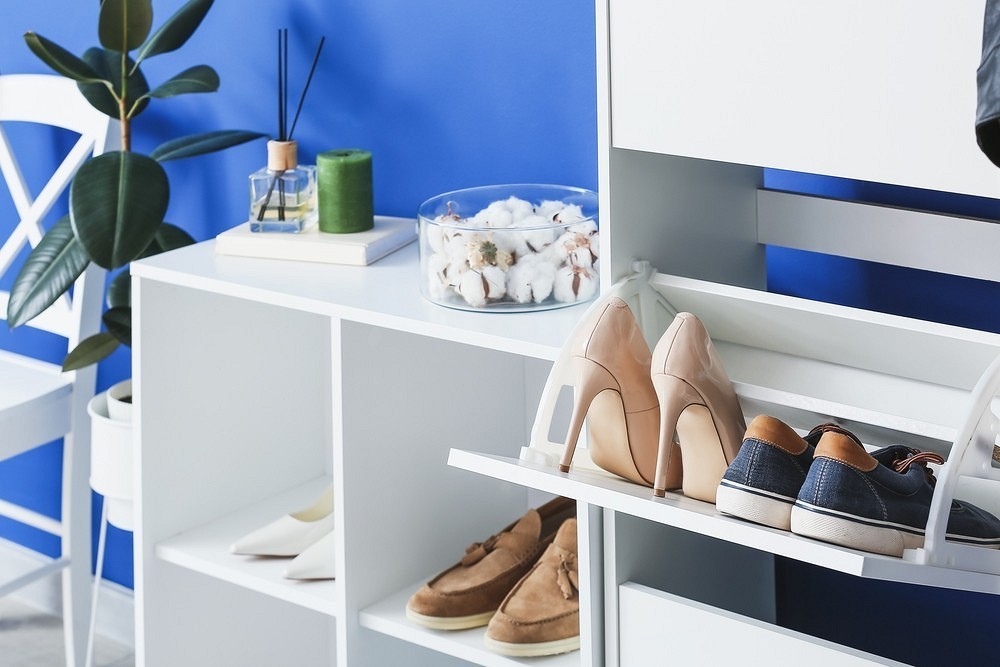
Shoe Cabinet with Hanger for the Hallway
For small spaces, the multifunctionality of furniture is very important. Therefore, manufacturers now offer many “two-in-one,” “three-in-one,” and sometimes even more complex storage systems. For example, a system that combines a place for shoes and a hanger for clothes is relevant for the entrance area. Almost always, this is part of a unified structure with a cabinet or shelves, and it also includes a seat for more convenient dressing. Such models are available both ready-made and custom-made.
Another popular option is a hallway cabinet with a built-in shoe storage area, which is also convenient because it eliminates the need for a separate storage system.


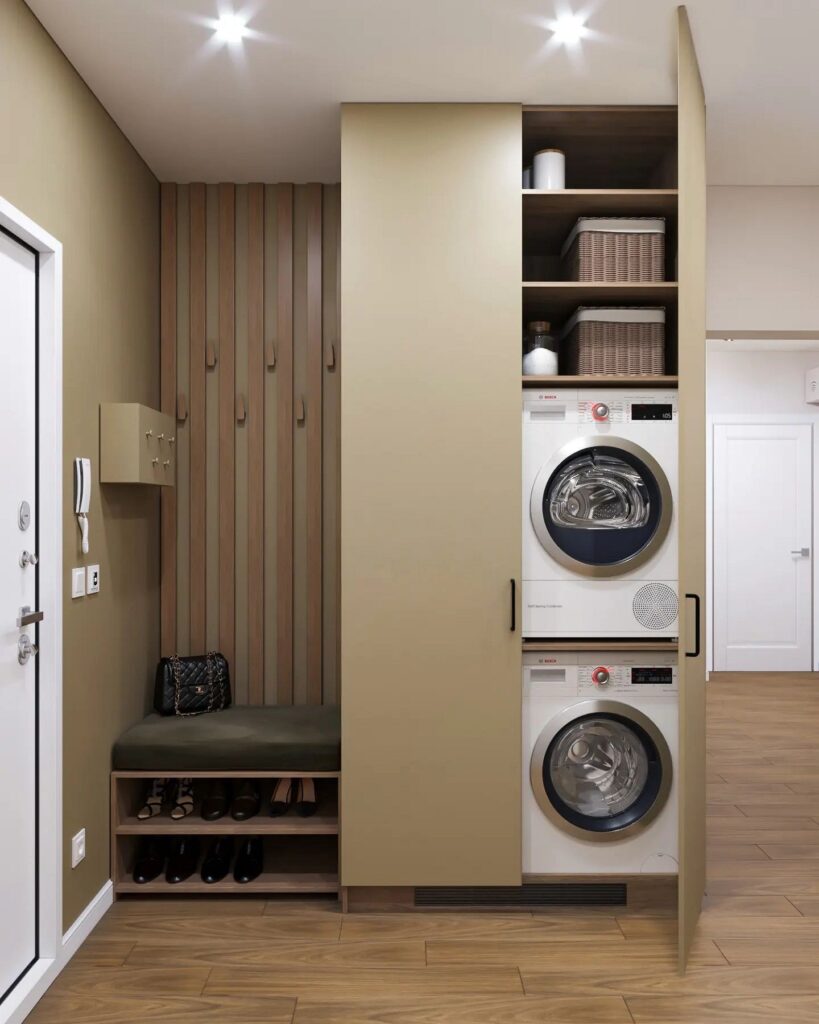
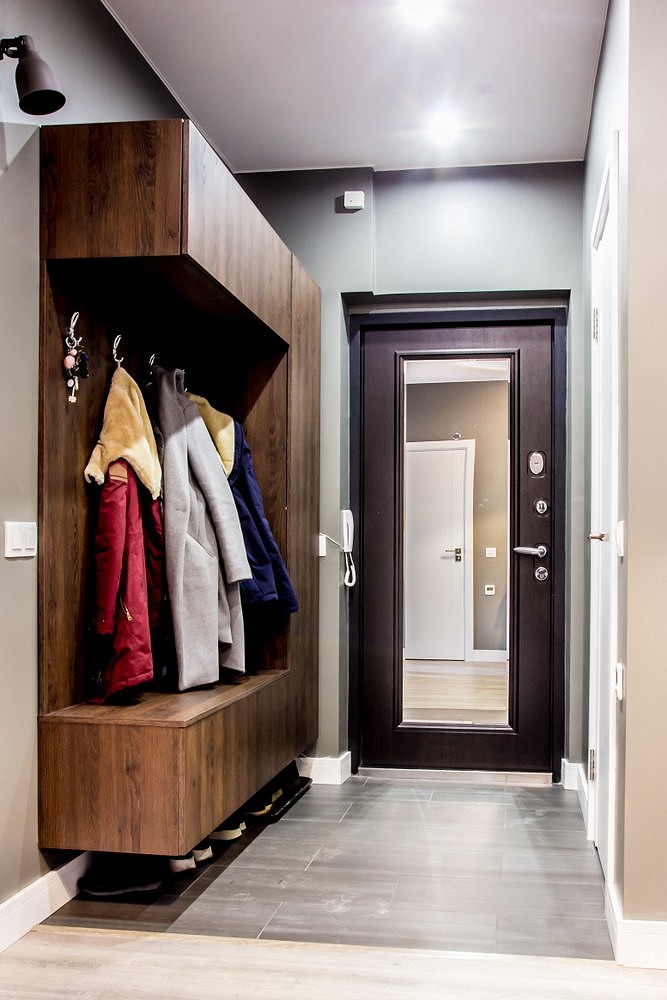

Material
The range of materials is typical for any furniture of this type. When choosing, base your decision on the budget, the overall style of the apartment, and the characteristics of the entry area.

Wood
A durable, high-quality material, completely eco-friendly and hypoallergenic. Accordingly, it is quite expensive, especially compared to alternatives. Wooden facades are often chosen for classic and traditional styles, where the naturalness of materials is important. Or for eco-style or soft minimalism with an emphasis on textures.
Remember that wood does not tolerate high humidity and constant contact with water, so it’s better not to place such furniture too close to the front door.
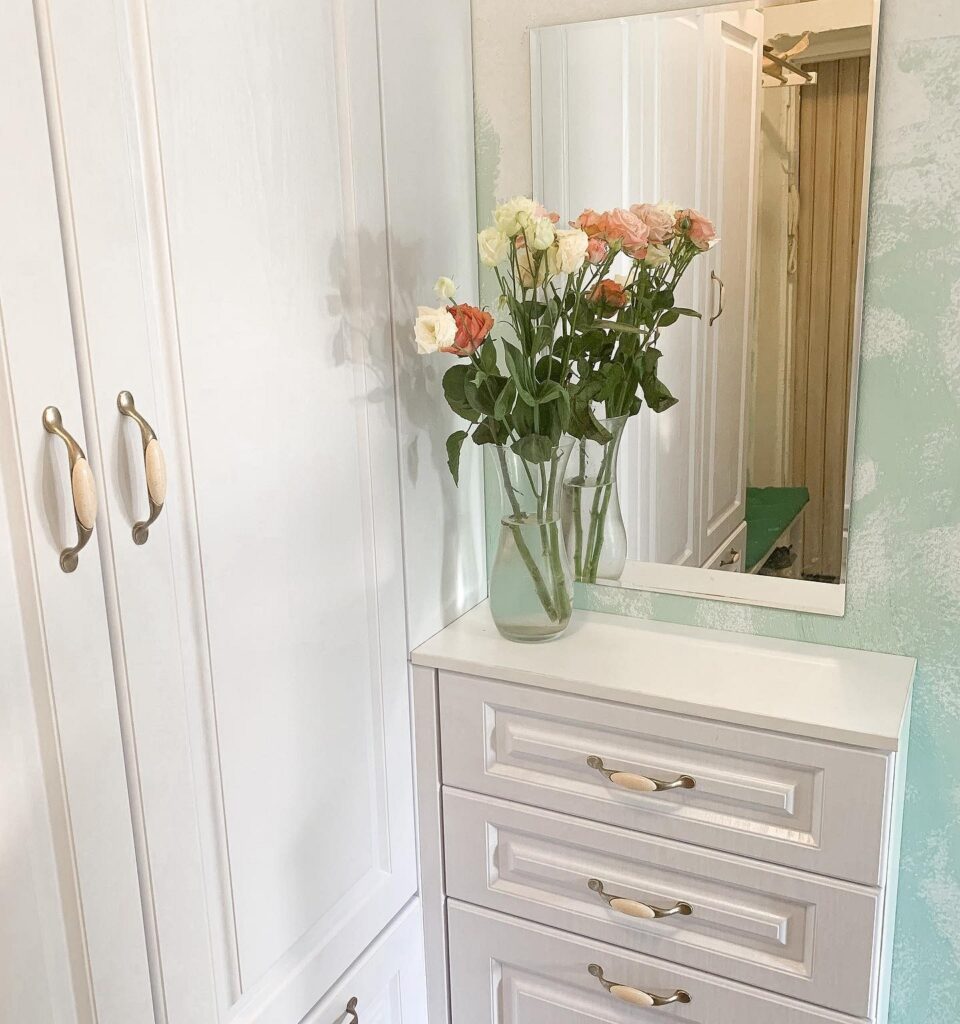
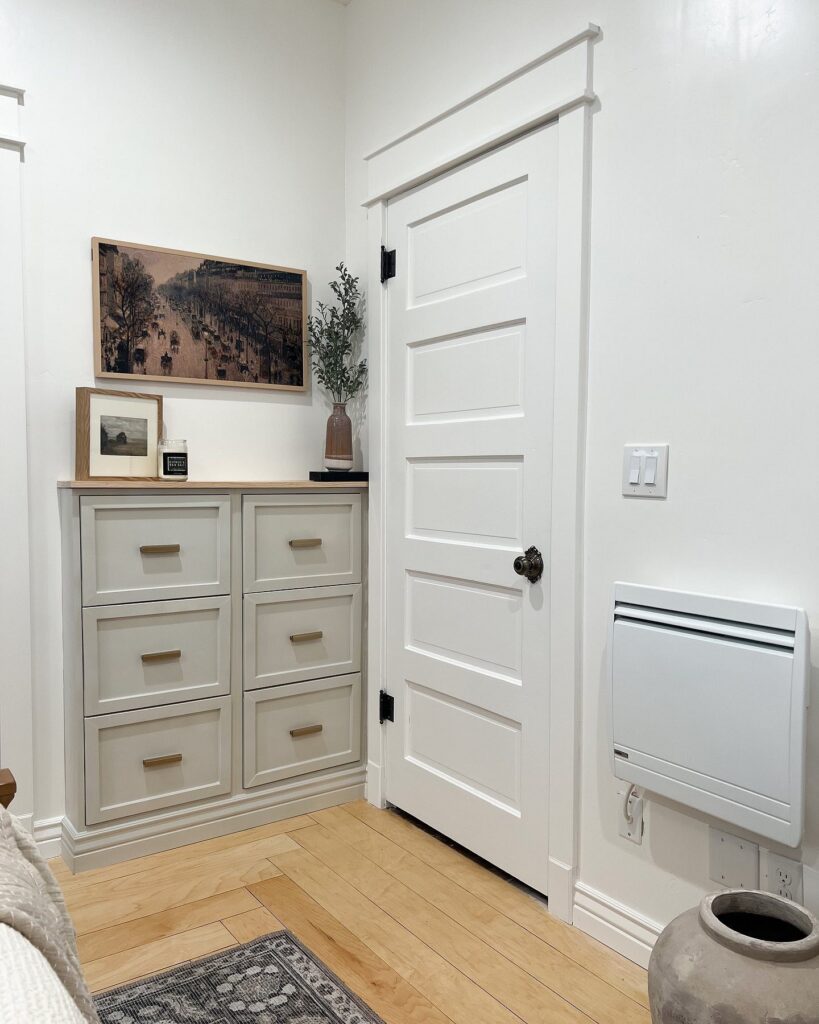
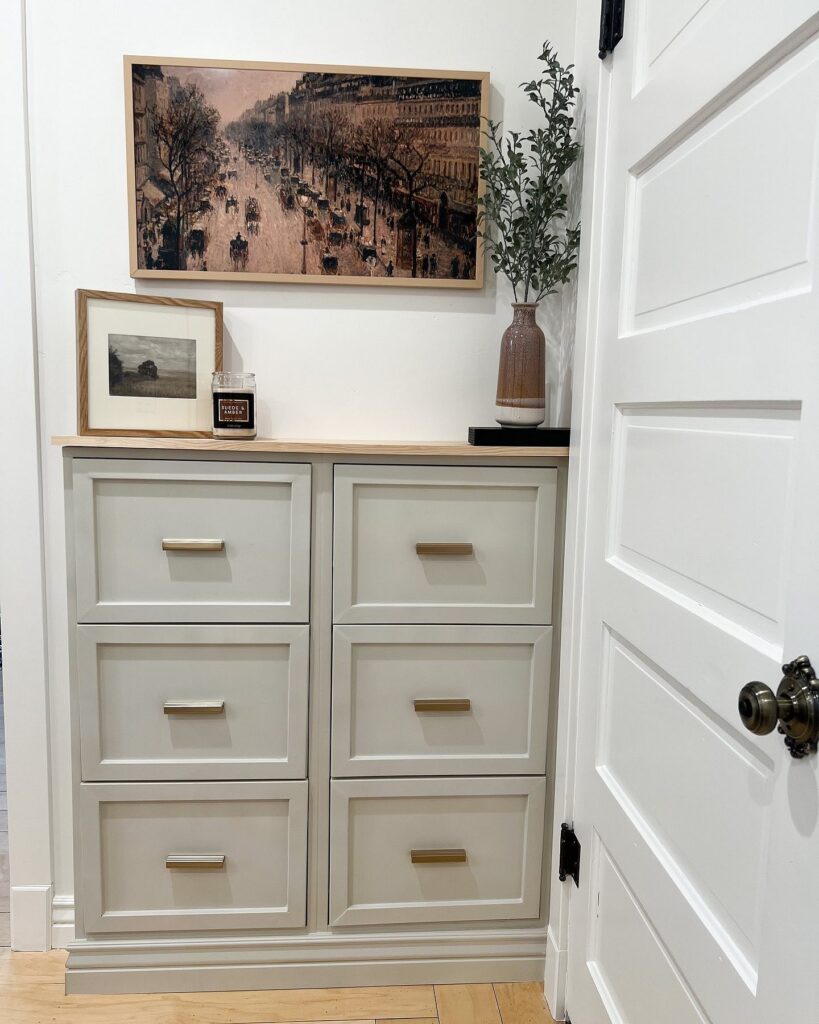
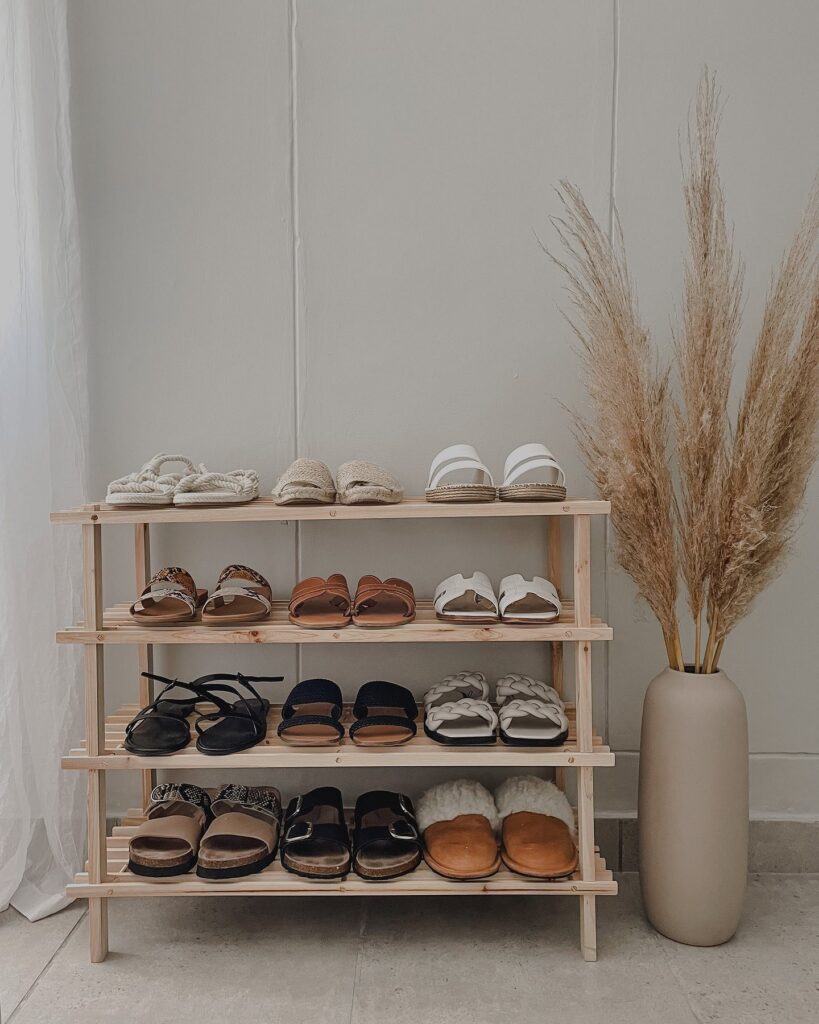
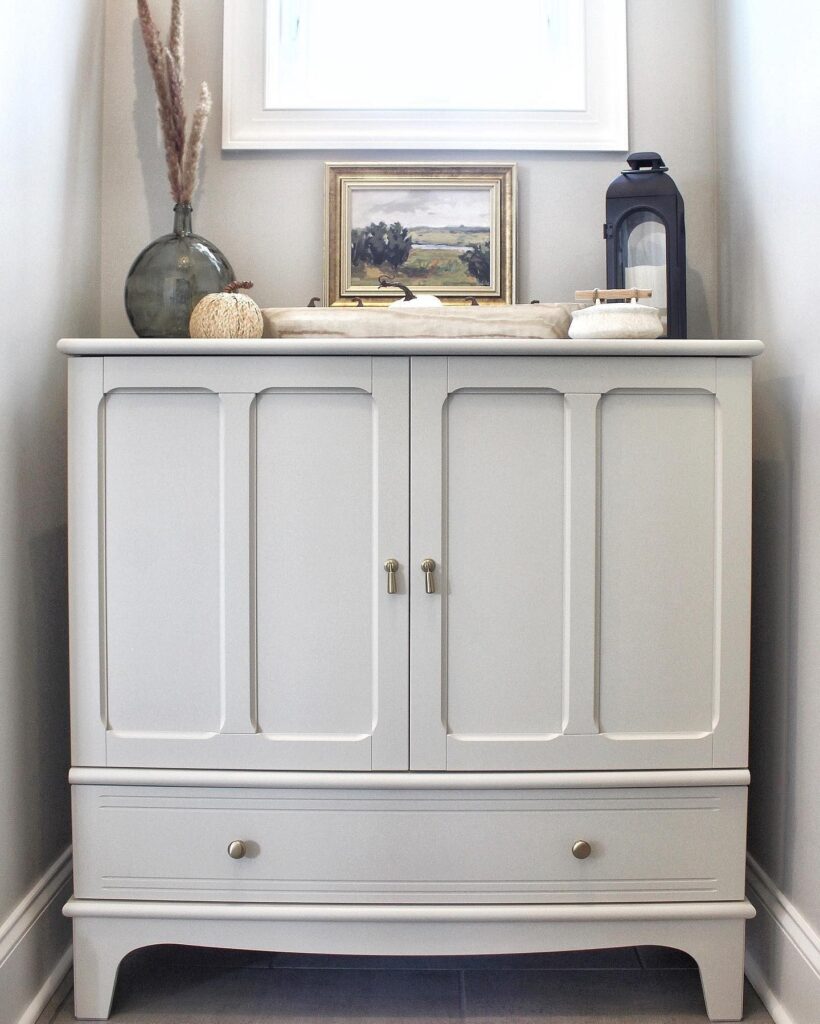
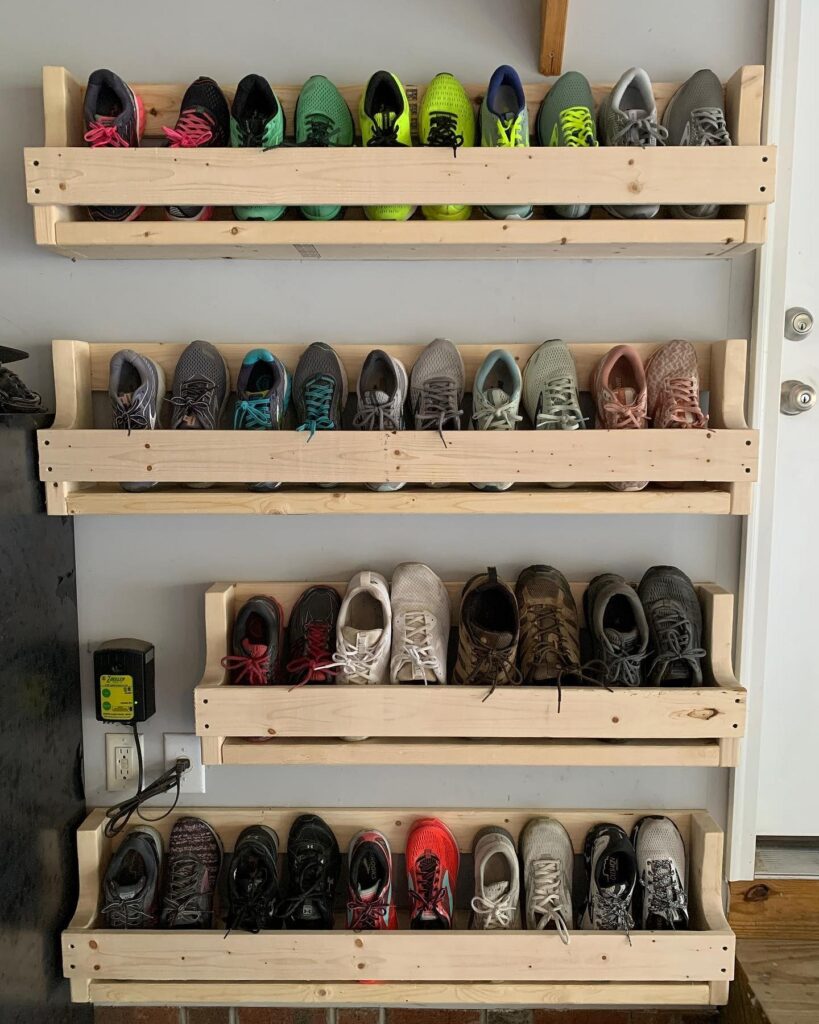
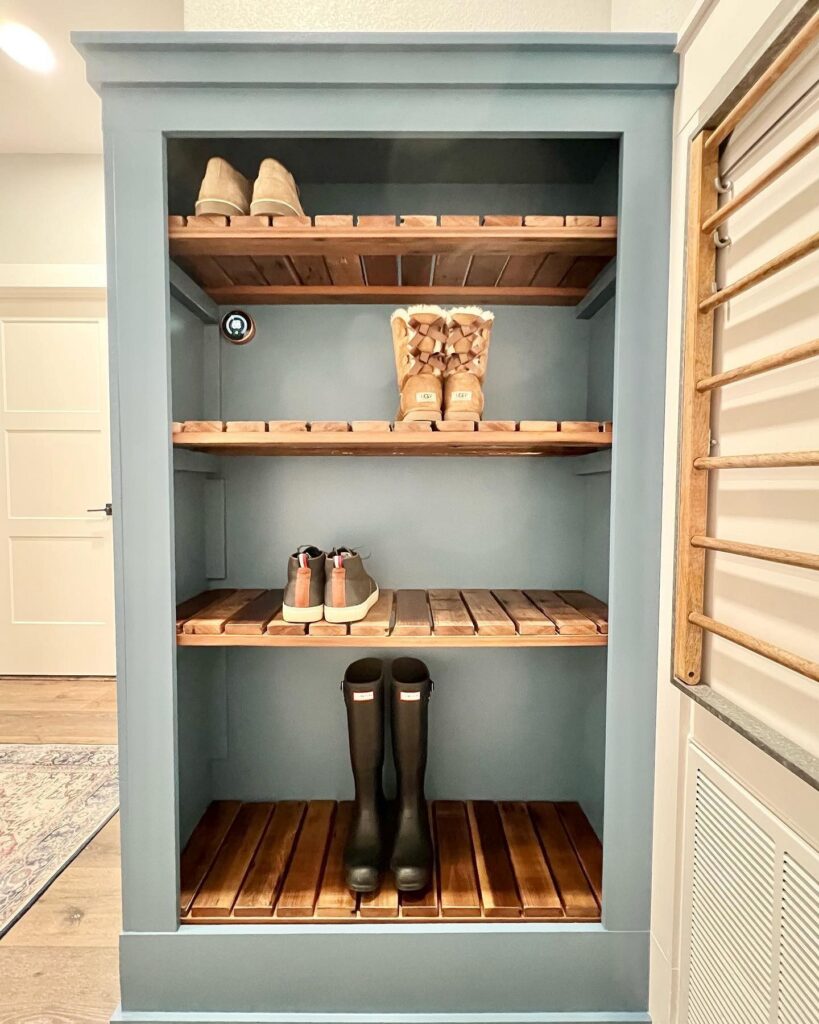
MDF or Particleboard
These are the most popular alternatives to solid wood, used in the manufacture of almost all furniture nowadays. MDF is of better quality and generally more durable, while particleboard is cheaper. However, particleboard is not considered the most eco-friendly material, but if it’s from a reputable manufacturer and has a quality certificate, it can even be used in living rooms, let alone hallways.
Another major advantage of both materials is the variability in design. This applies to both colors and the texture of the coating and decorative possibilities: you can find models with rounded corners, ribbed surfaces, and intricate reliefs.

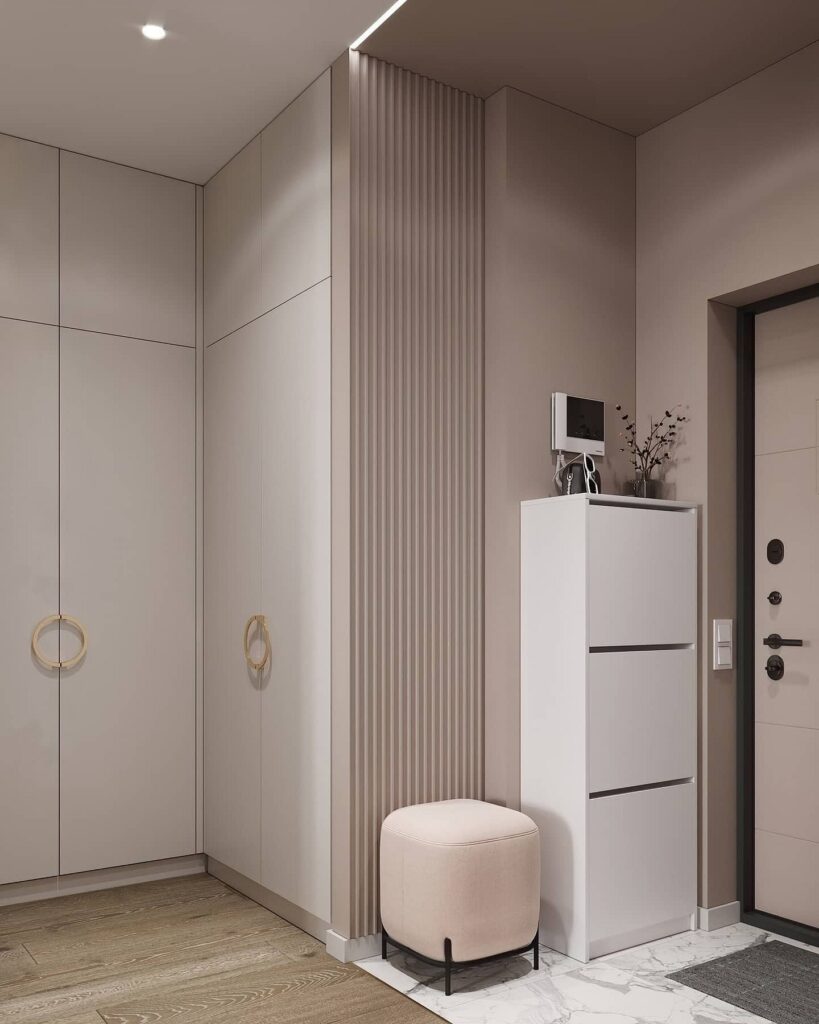
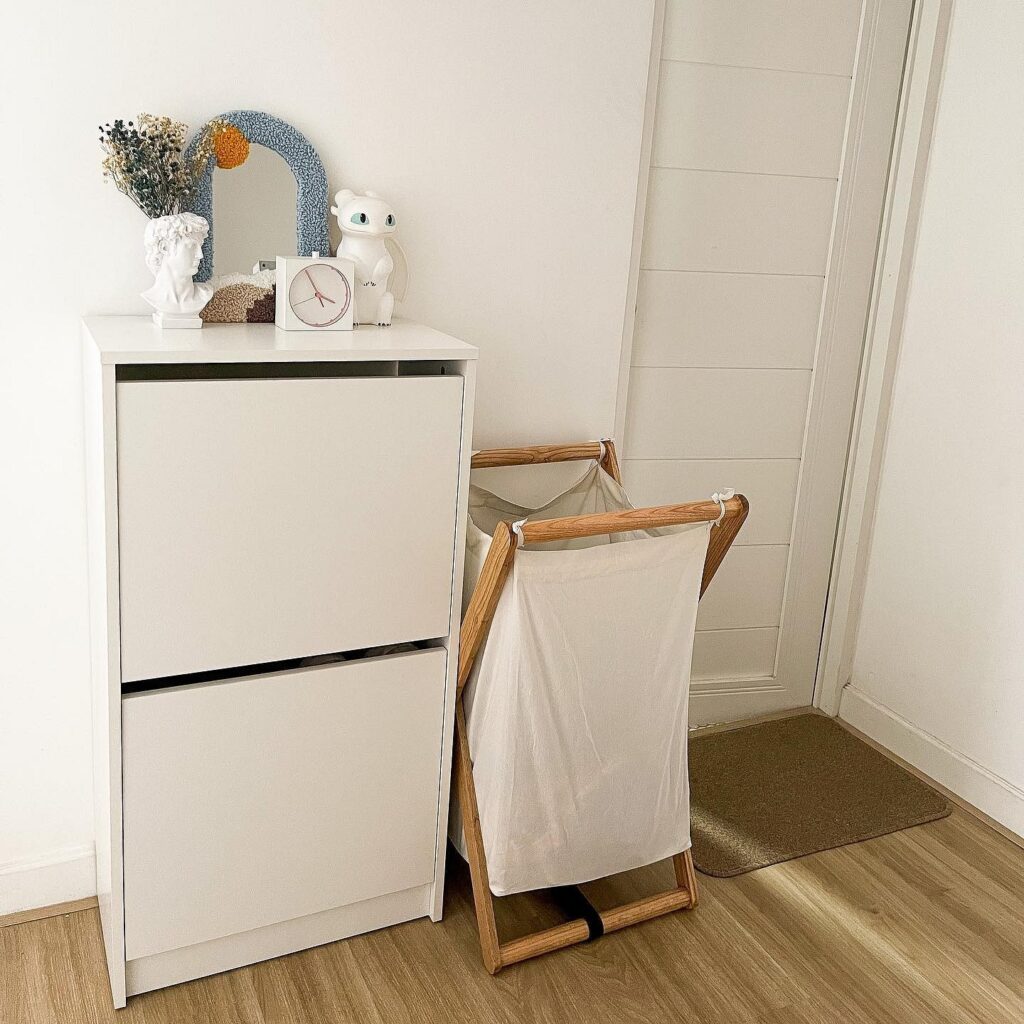
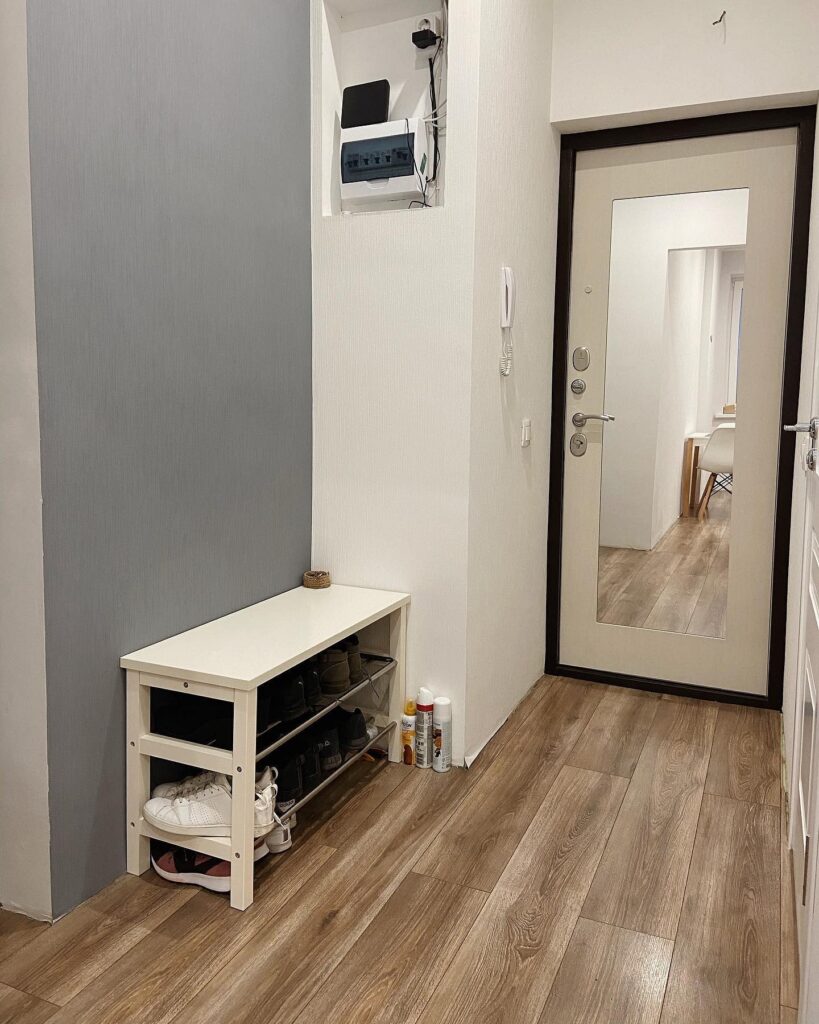
Metal
Metal is used to make either open racks and shelves, or the legs and frames of closed systems. The material is heavy, but it is maximally strong and durable. It’s resistant to mechanical damage, moisture, and temperature fluctuations. Also, it’s easy to clean.
Stylistically, it doesn’t fit into every interior; it’s primarily an option for lofts and often for eclectic styles.
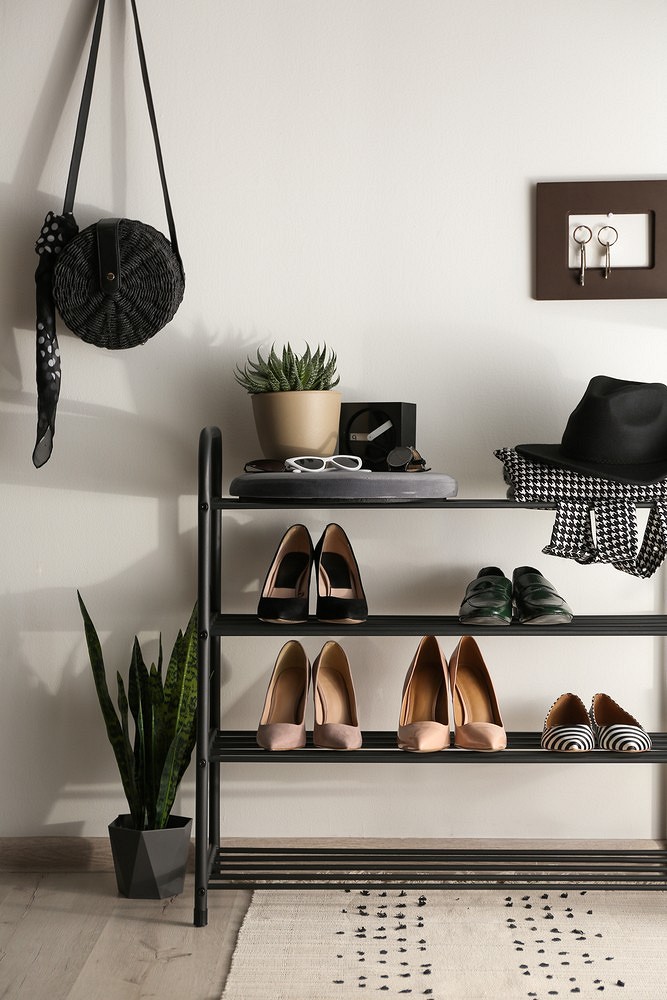
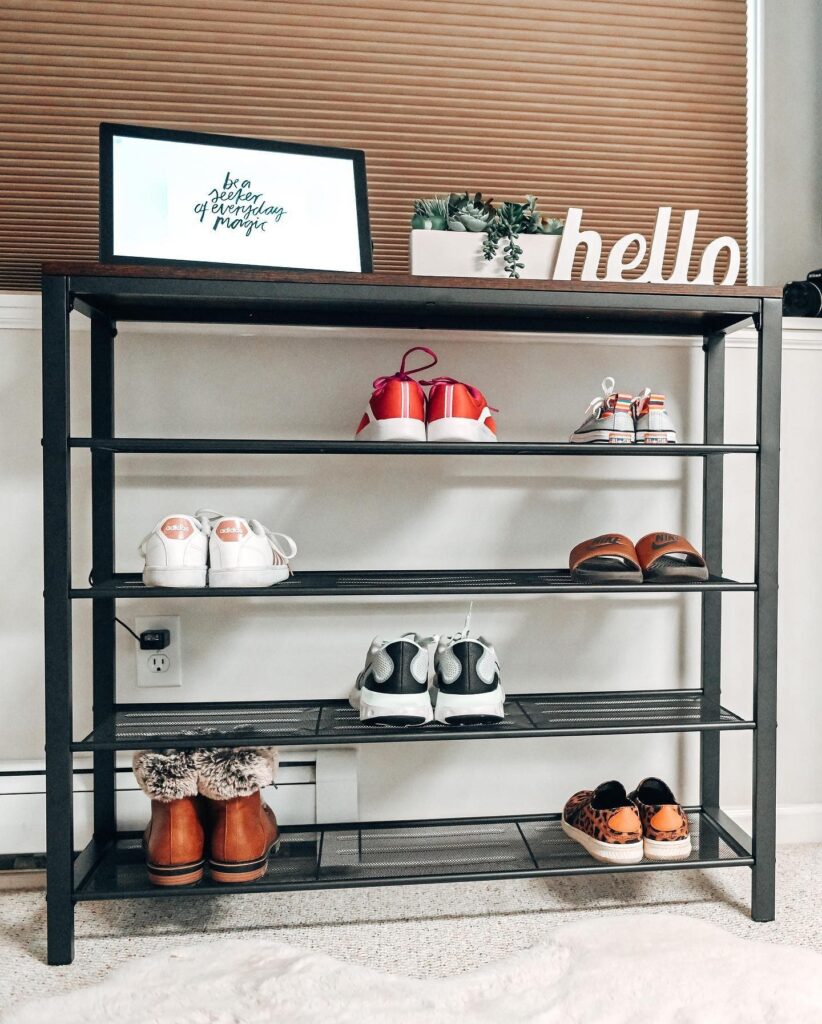
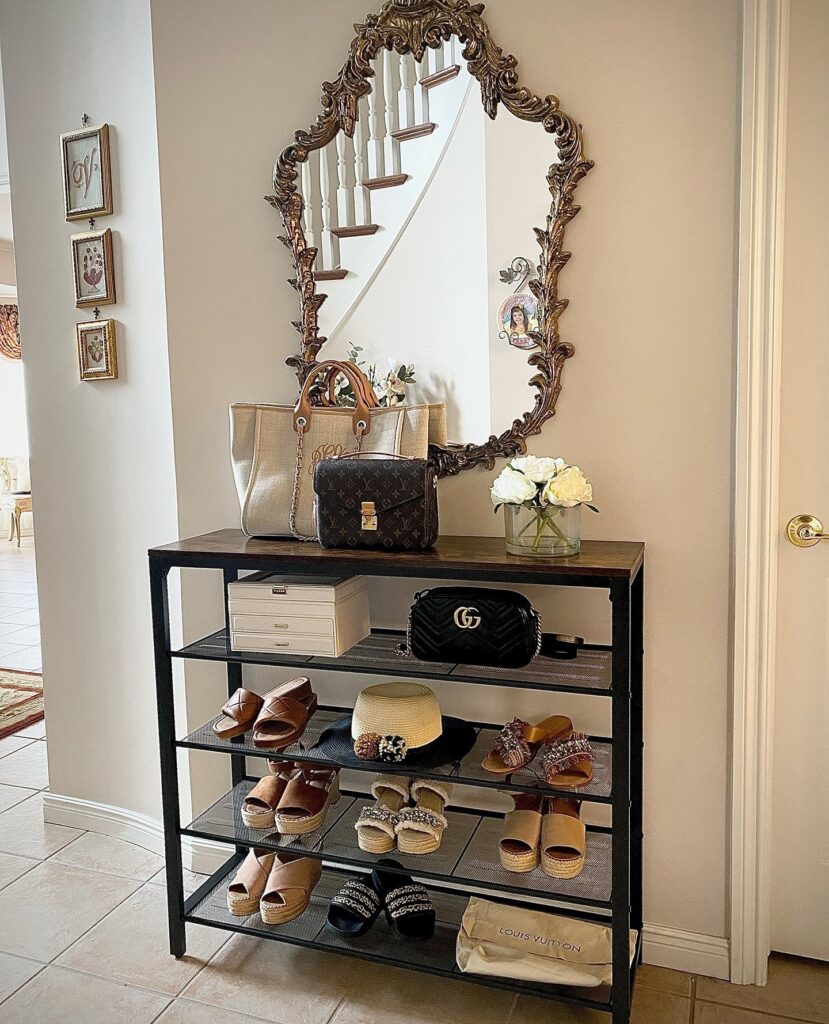
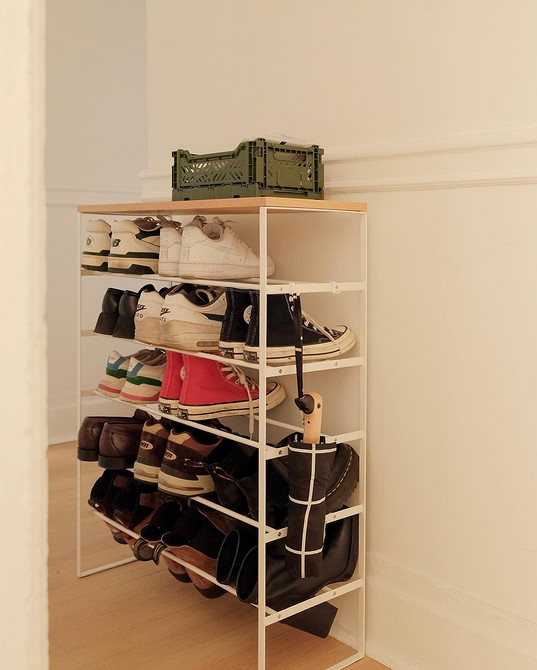
Plastic
Plastic is the cheapest of the options presented. It’s lightweight, doesn’t rot or become a breeding ground for mold, is water-resistant, and doesn’t require complex maintenance. However, it’s relatively fragile and may sag or even break under the weight of multiple pairs of shoes. Visually, it often looks simple. It’s suitable for a minimalist modern interior, but definitely not for traditional classic, Art Deco, or boho styles.
In some products, plastic is used only for parts of the construction, such as internal compartments, while the facades are made of MDF or particleboard.
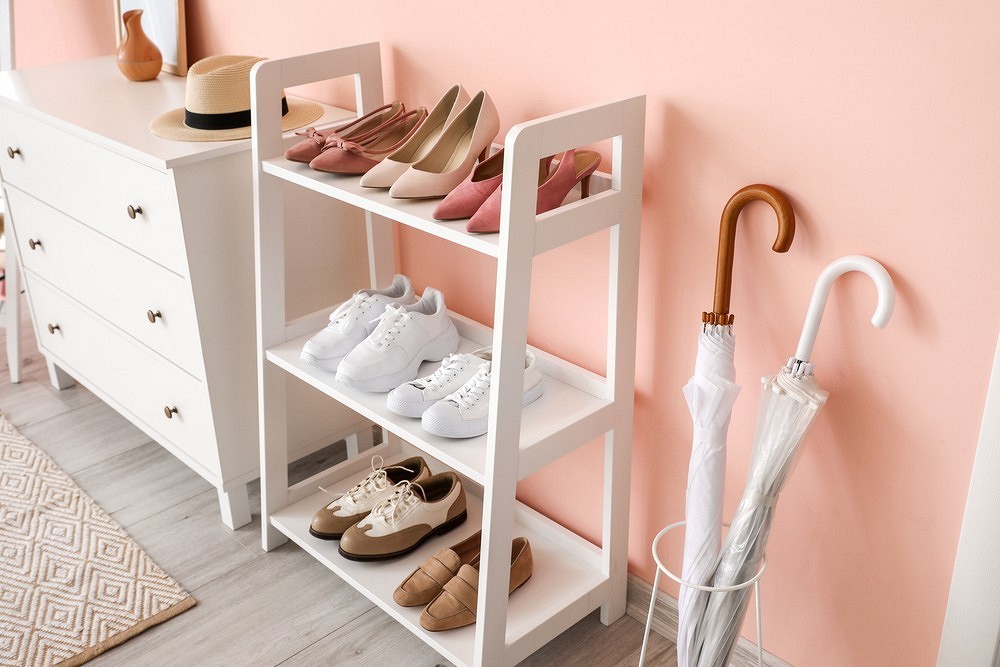
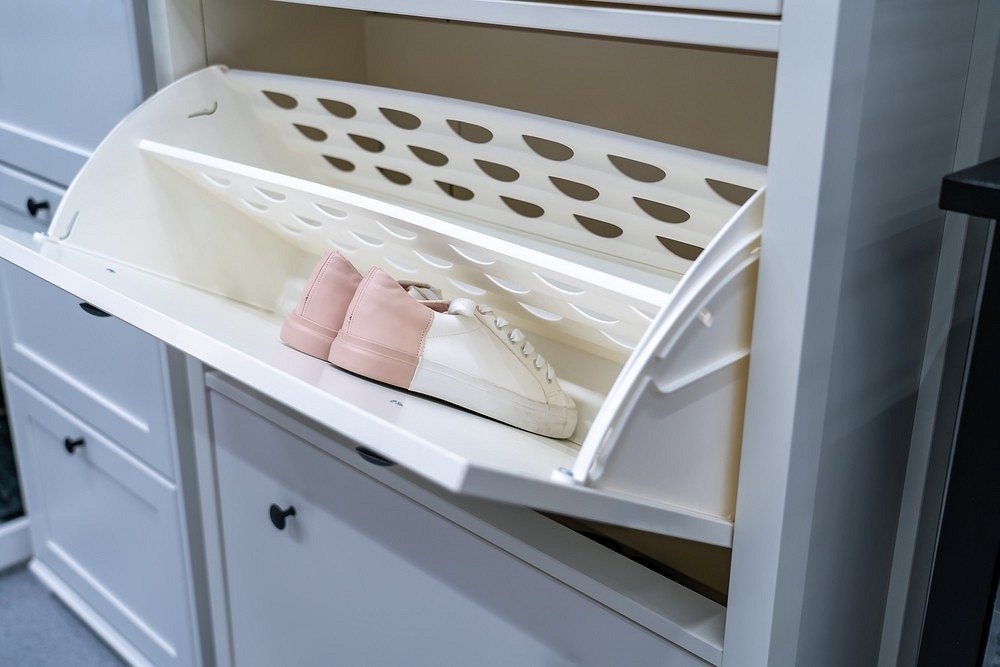
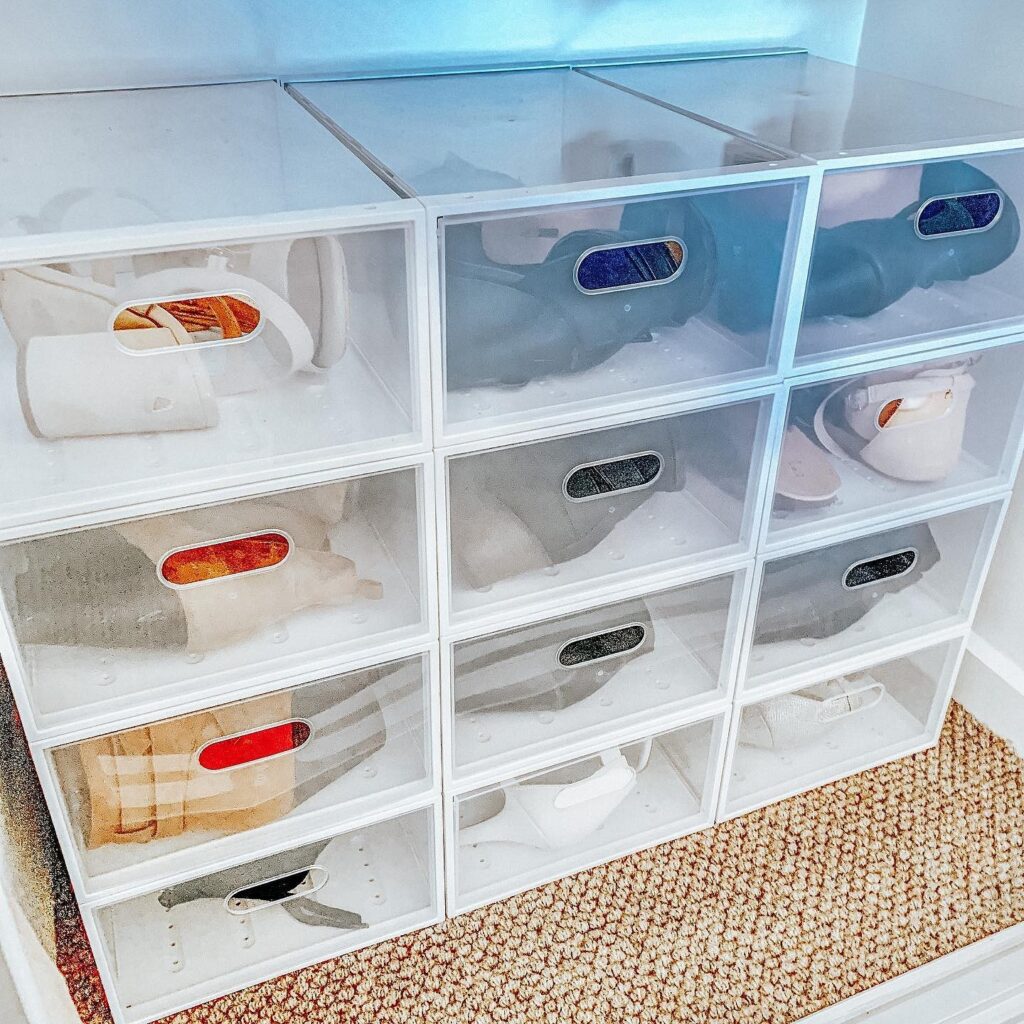
Choosing the Right Size
Space in apartment hallways is often limited, with a particular challenge being the narrow “appendix” characteristic of Khrushchyovka and panel buildings.
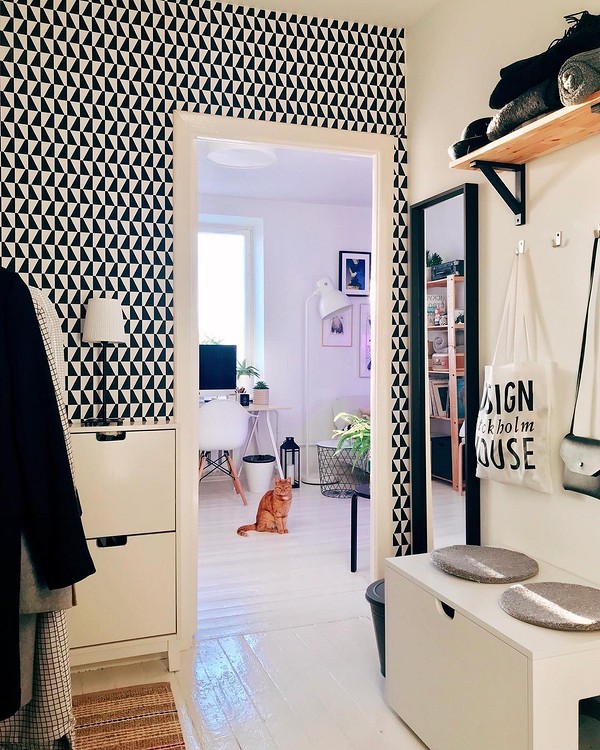
It may seem impossible to fit any furniture into such a long, narrow corridor, but shoe consoles are an excellent option in this case because they are less wide than a standard dresser or cabinet. Therefore, finding suitable dimensions is feasible even for the most compact hallway.
To do this, follow these rules:
- First, definitely take measurements of the entry area and the spot where you plan to place the furniture.
- It’s important that the furniture not only fits in terms of size, but also leaves space to open/close doors or freely take out and put in shoes from an open section — depending on the model you have.
- Choose the depth of shelves or drawers based on the dimensions of the hallway and what you will store inside. For example, a narrow shoe cabinet in the hallway won’t suit bulky boots or large-size shoes; it’s better not to choose the minimum size. On average, double-row models have a depth of from 25 cm, and single-row models — from 10 cm.
- The same shoe wardrobe composition also affects the height of the shelves. For sneakers, boots, and women’s boots, it will be different. Perhaps a model with various sections designed for several types of shoes will suit you.

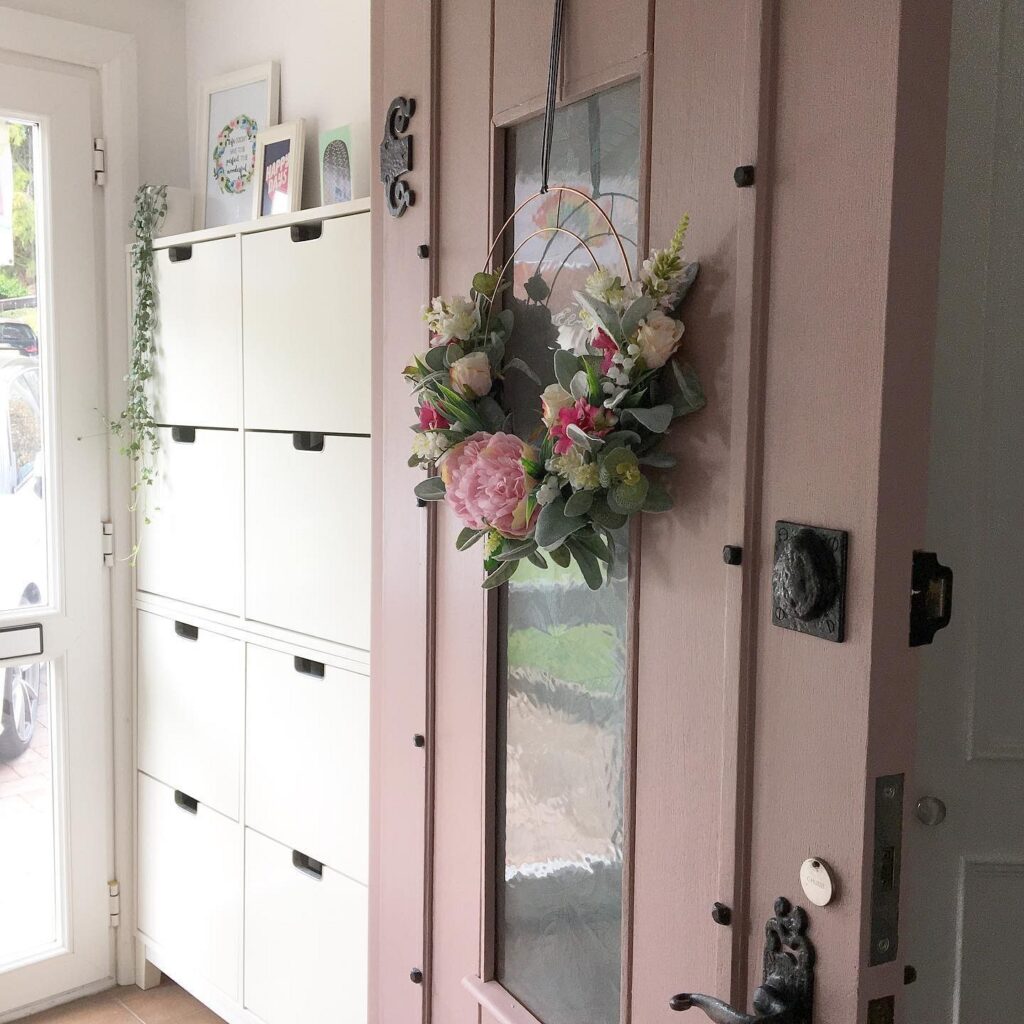
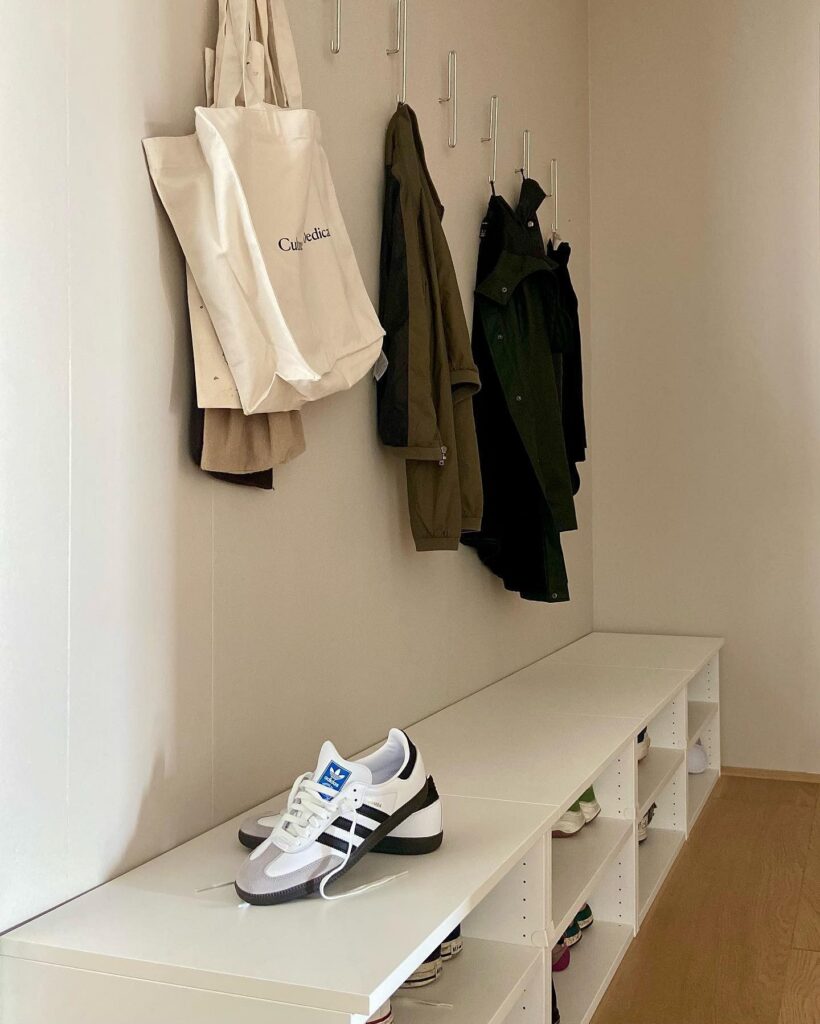
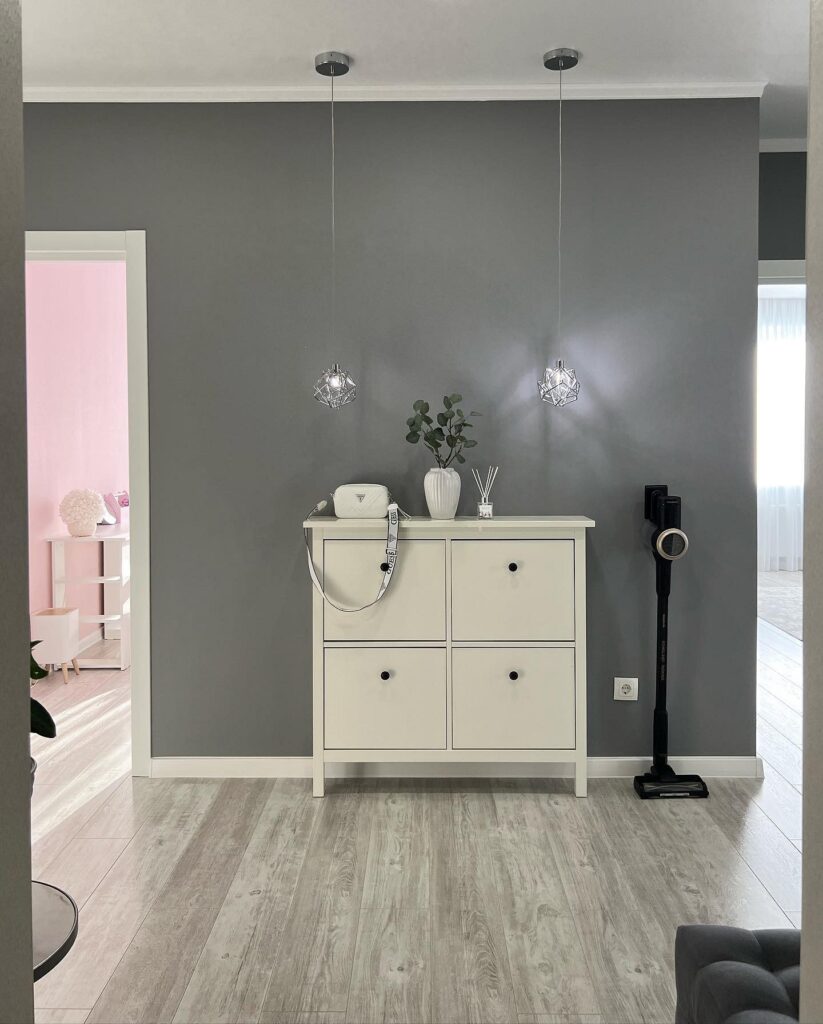
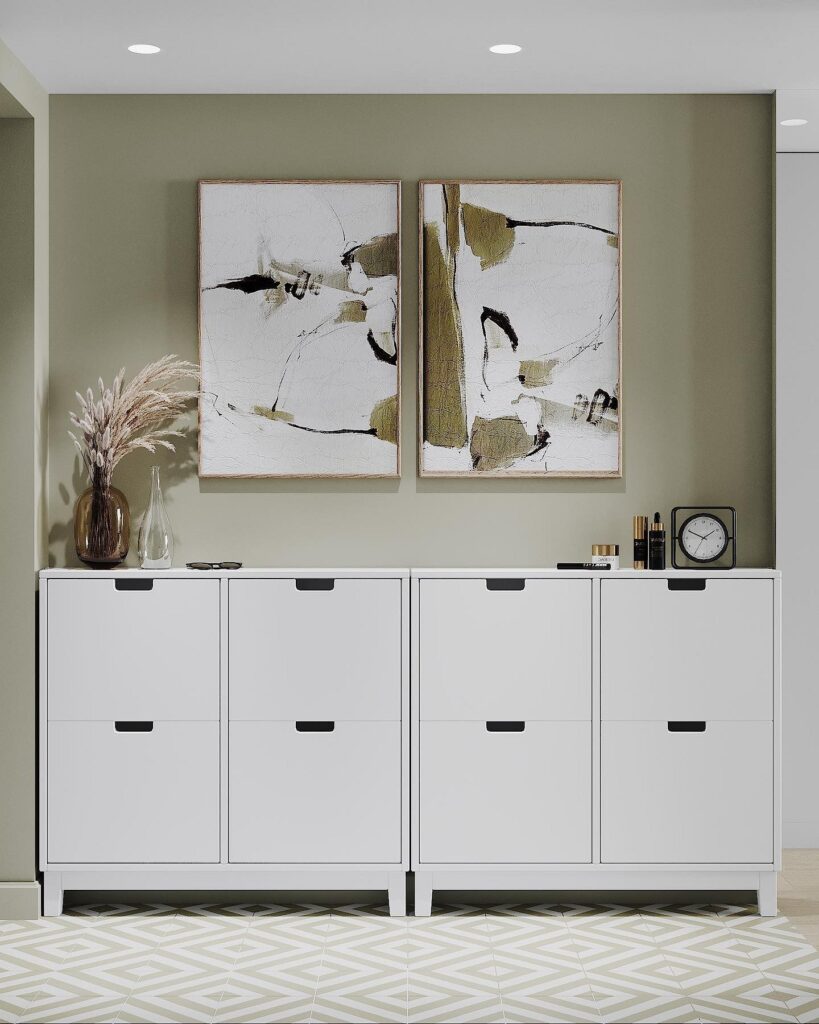

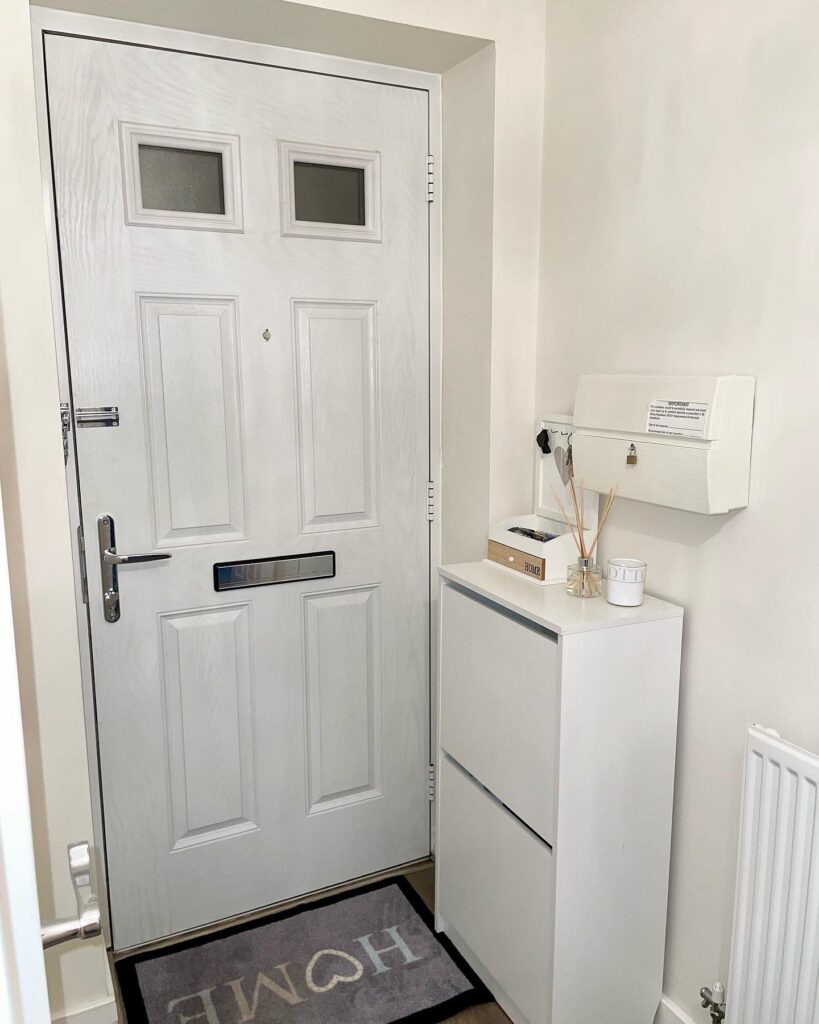
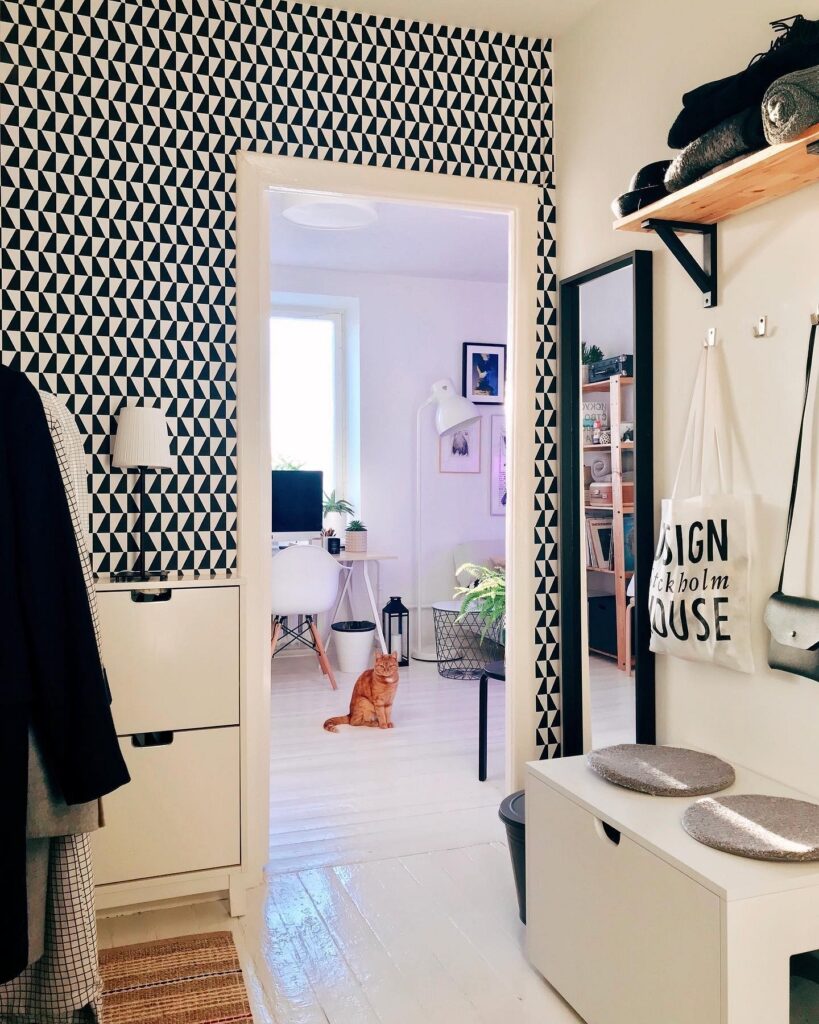
Where to Place
Another important aspect is where to place the shoe cabinet in the hallway (see photo below). There are only a few options, depending on the area and proportions.
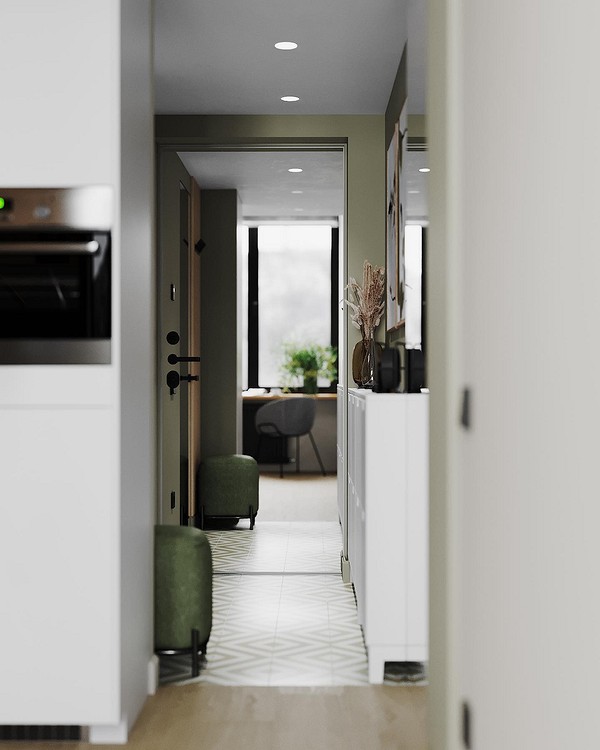
Next to the Door
If the width of the entrance area allows, the console or rack is most often placed next to the entrance door. For such a location, two- or three-section shallow models are not the best choice; instead, it’s better if several pairs of shoes can be placed one behind the other on one shelf, but the width of the unit will be smaller and it will fit between the door and the perpendicular wall.
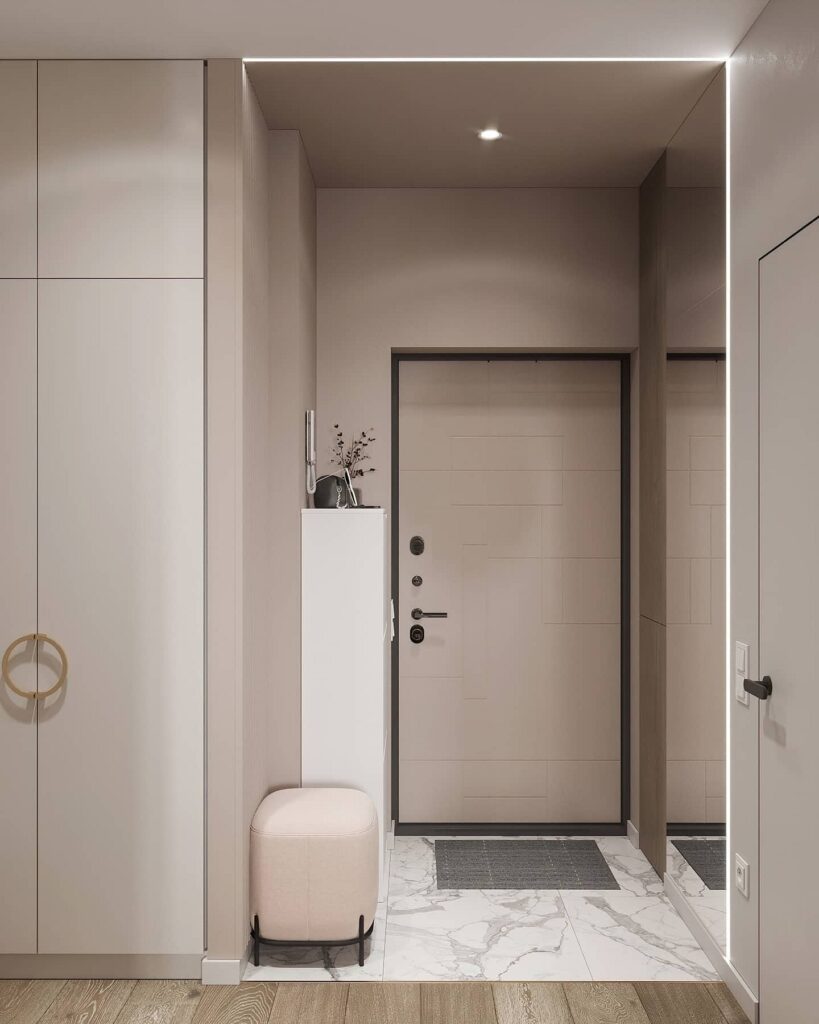
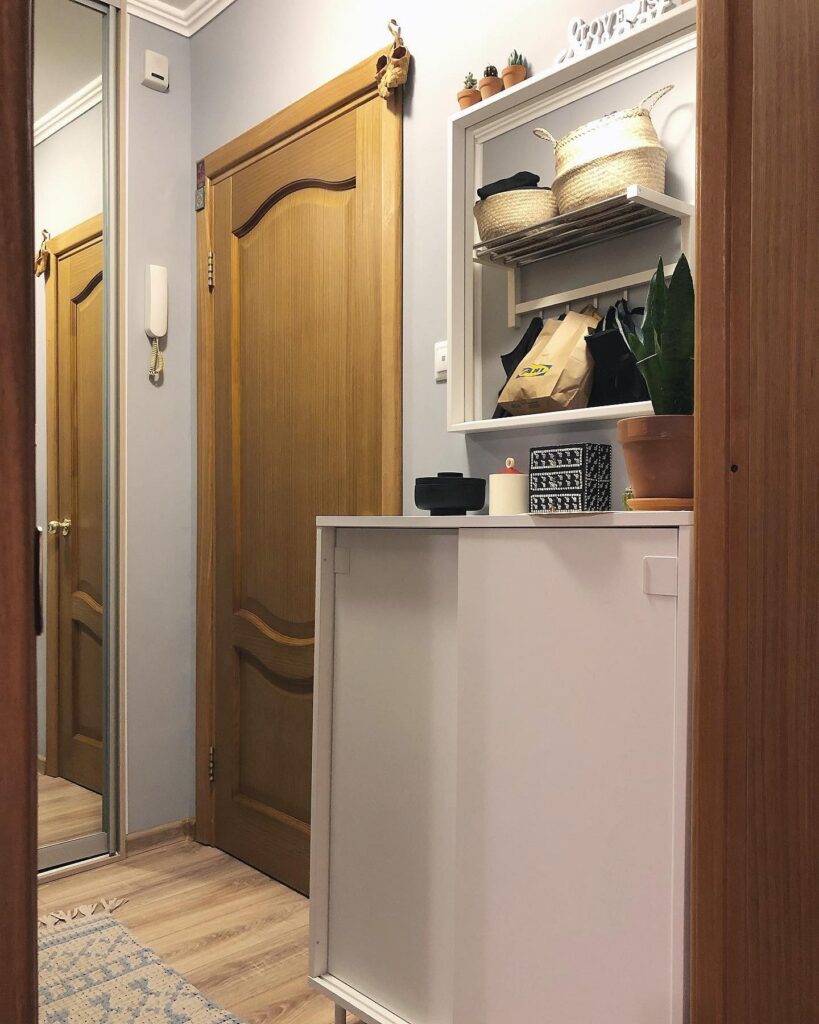
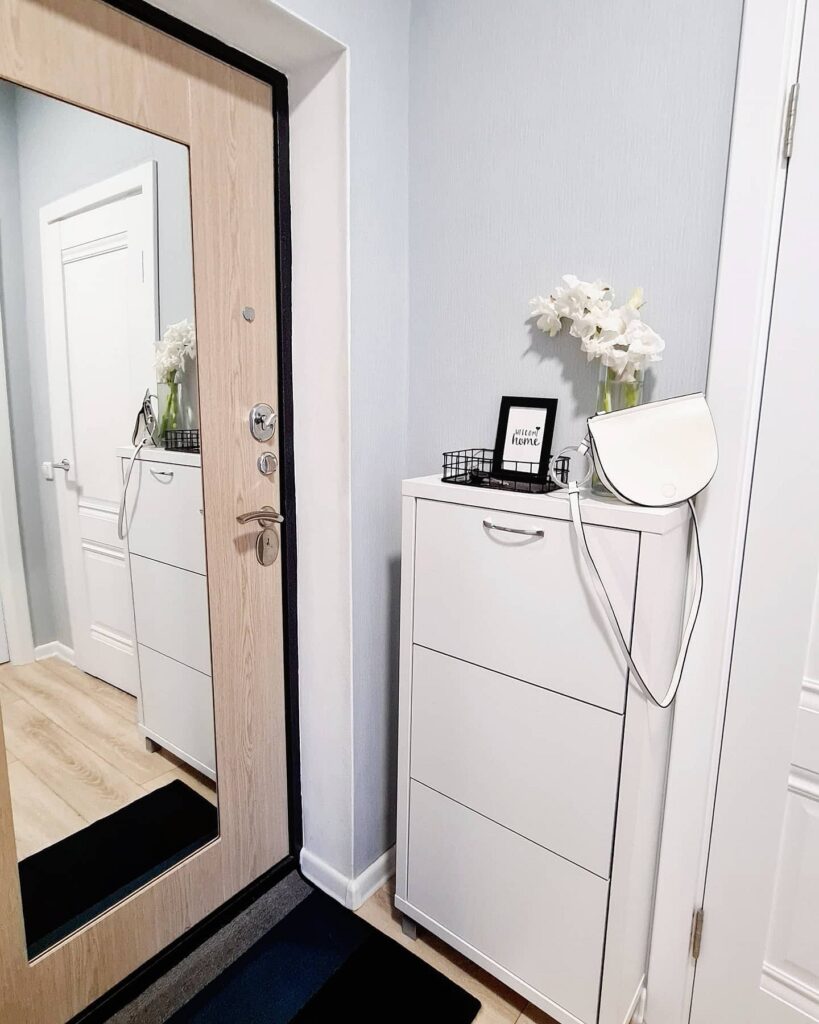
Along the Long Wall
In a narrow corridor, there is only one option – to choose a console of minimal depth, where shoes are stored at an angle, and place it along the long wall. The main thing is to make sure that you can easily open and close the drawers, especially if they are flip-down or if you have chosen hinged doors, like those on a regular cabinet.
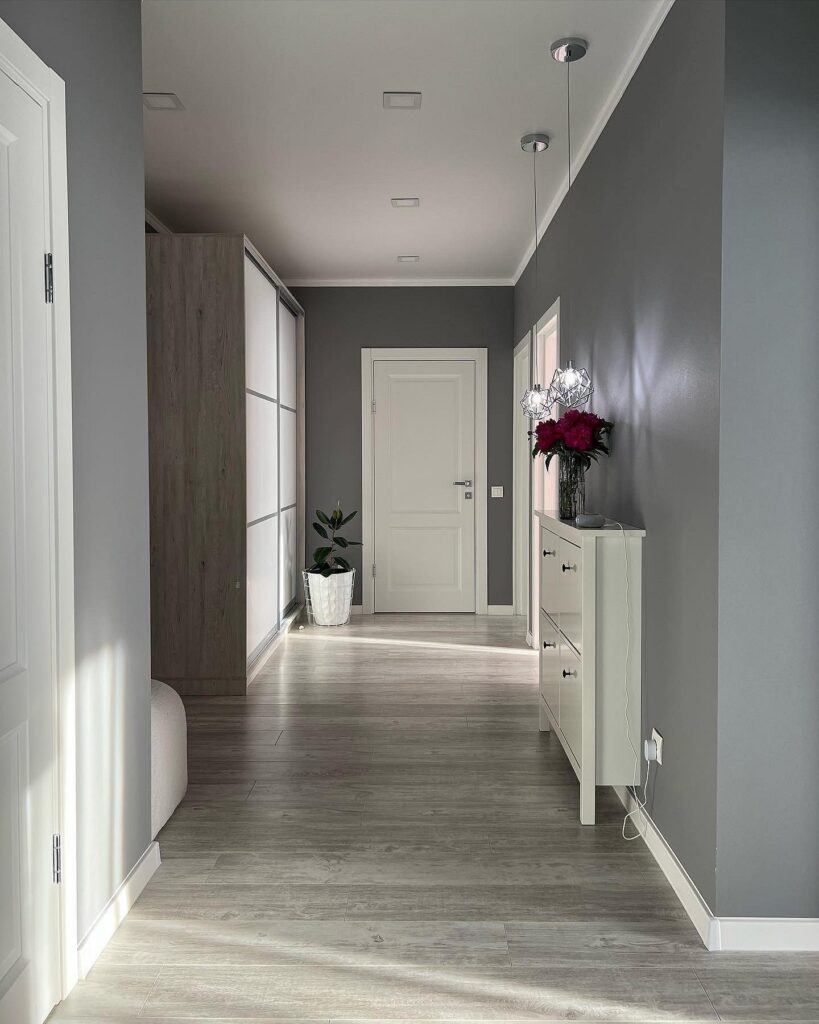
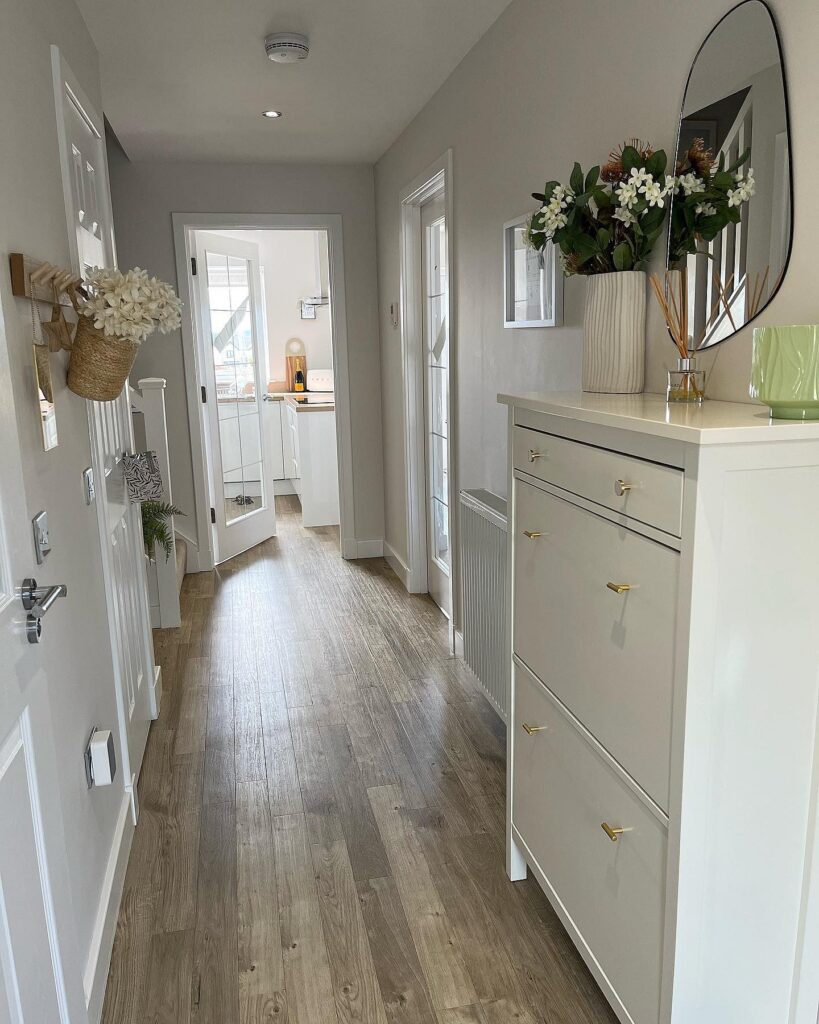
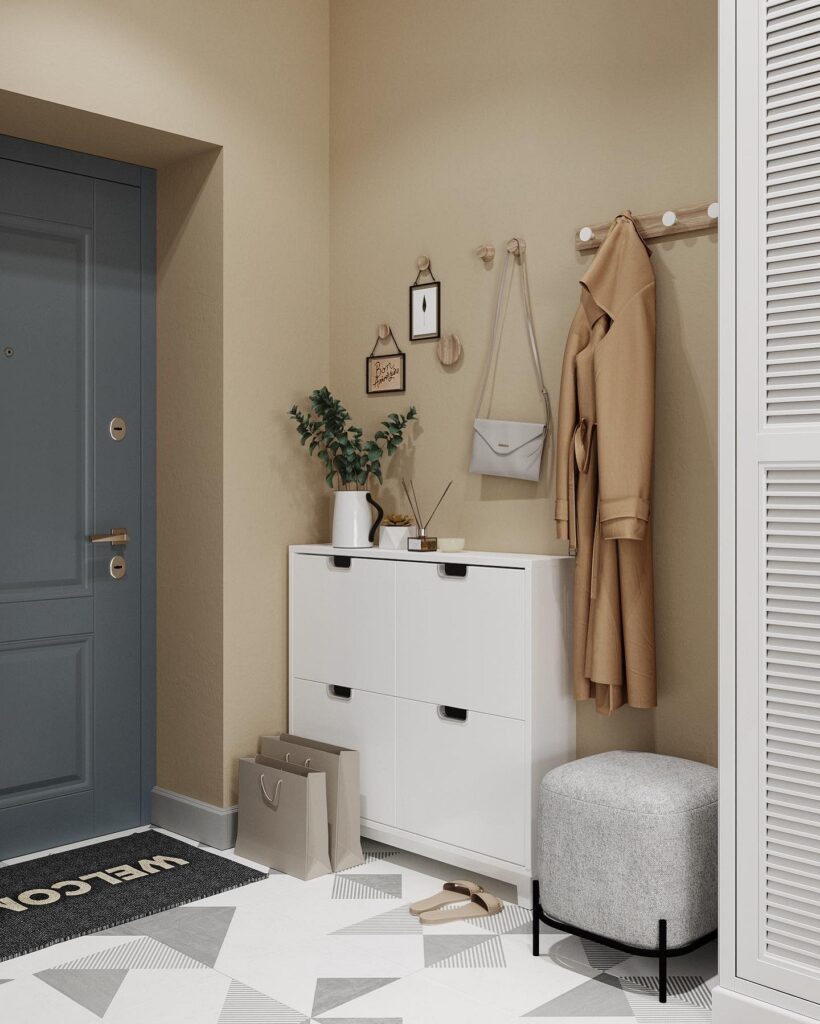
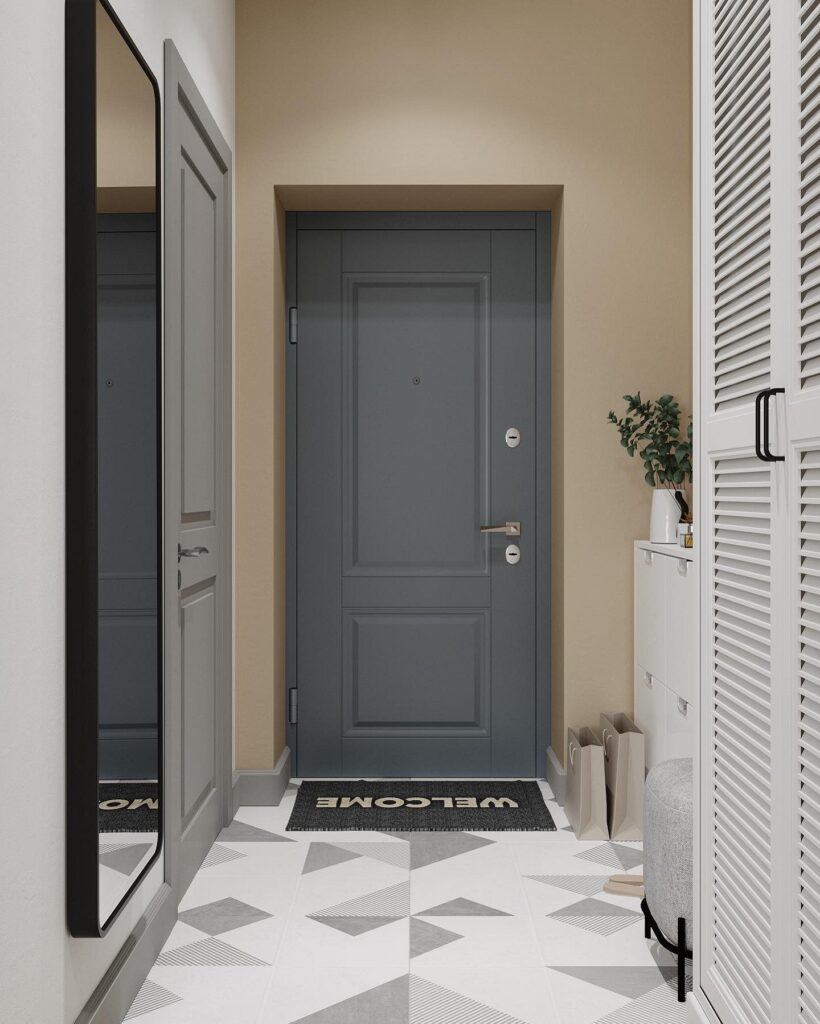

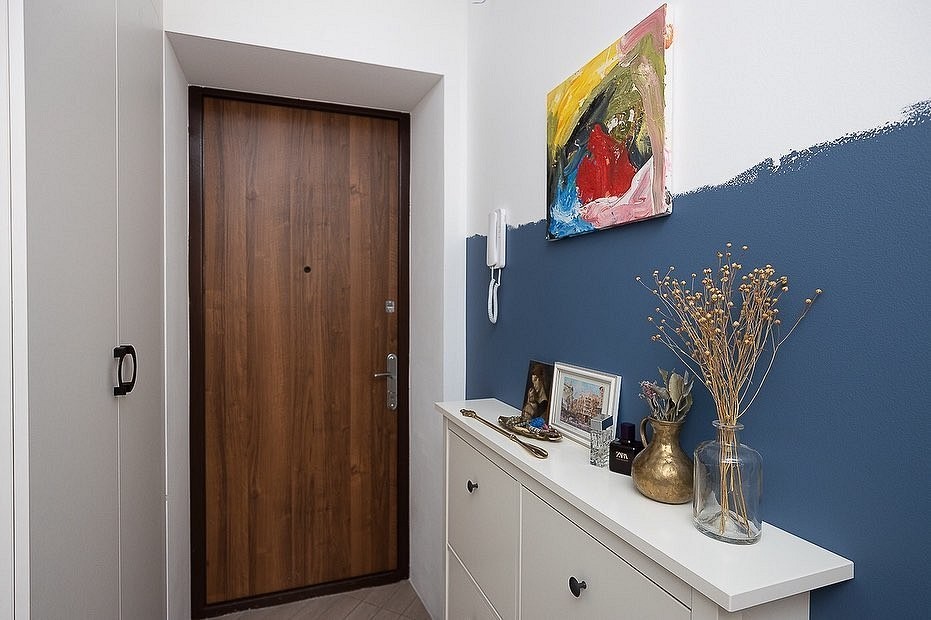
Mount on the Wall
Finally, if space is very limited, you can lift the storage system off the floor and fix it directly to the wall. This can be just a few shelves or an entire shallow rack — either standalone or integrated into a general storage system. With such placement, you can free up some space at the bottom: lay a mat there, place a tray for wet outdoor shoes, or even a compact bench.
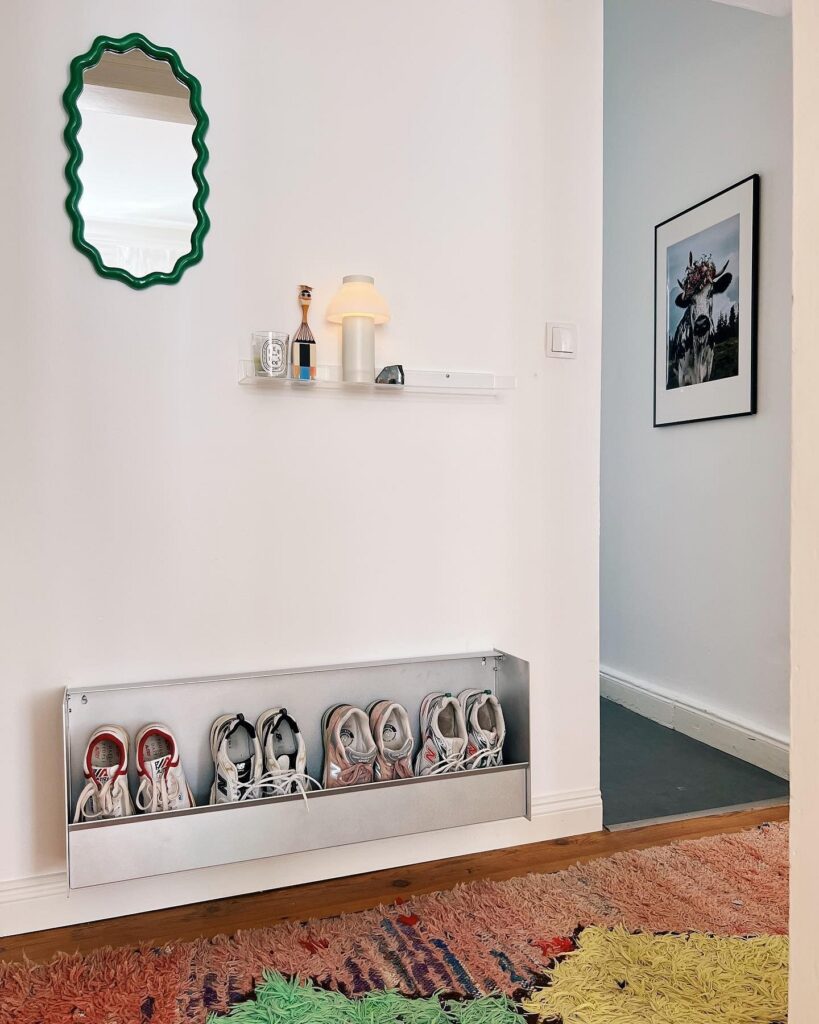
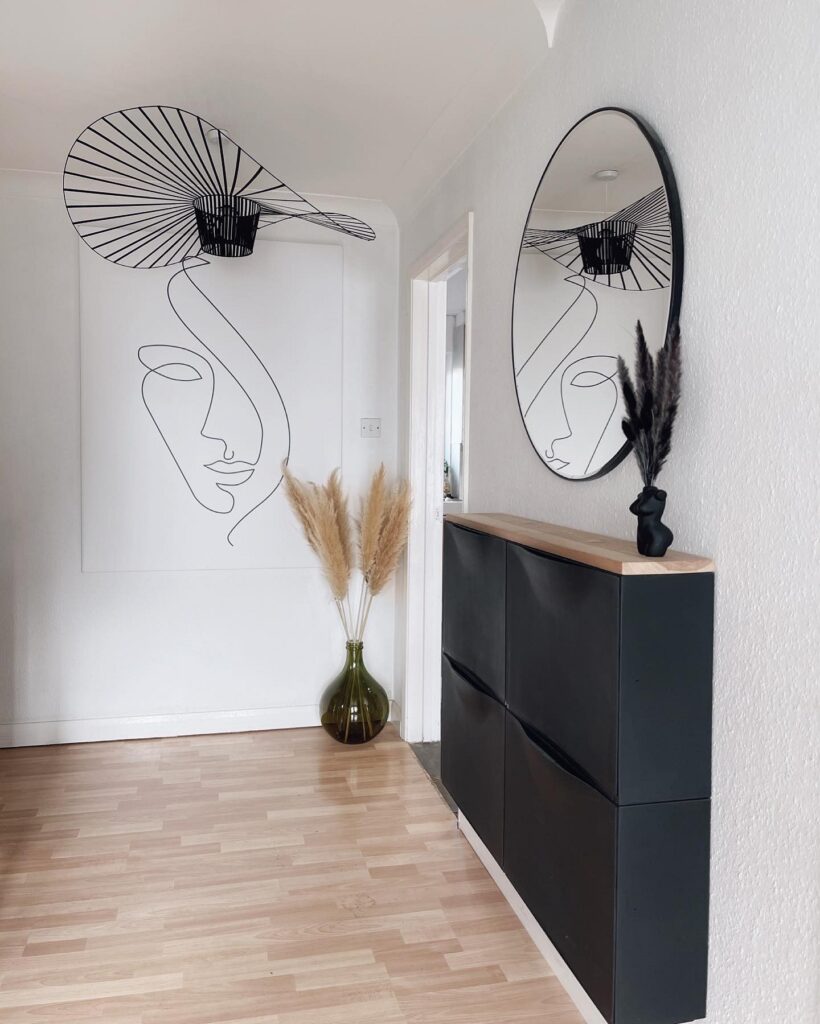
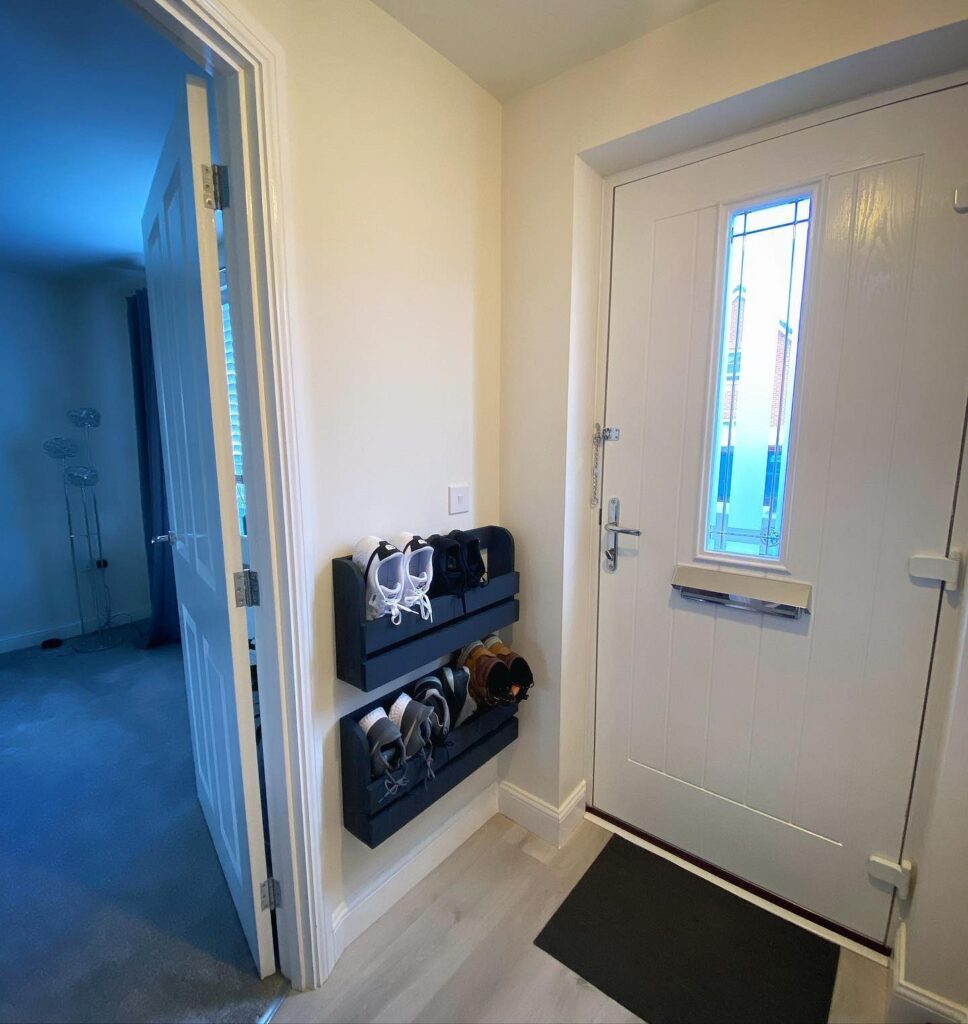
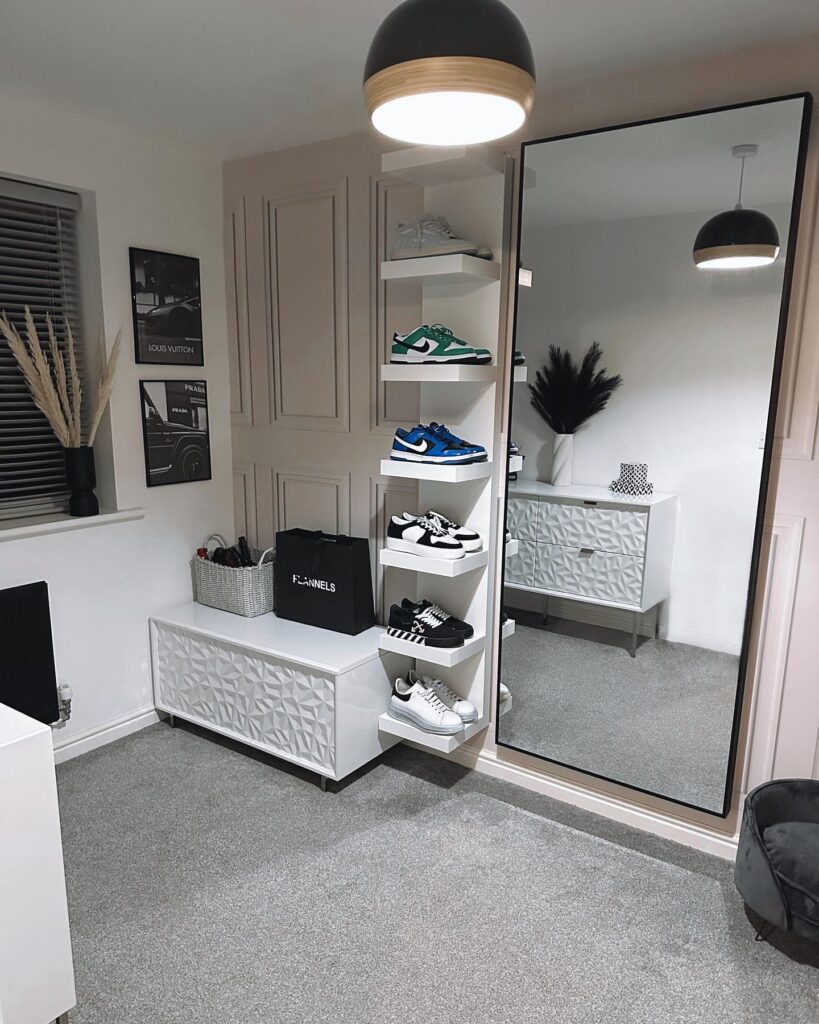
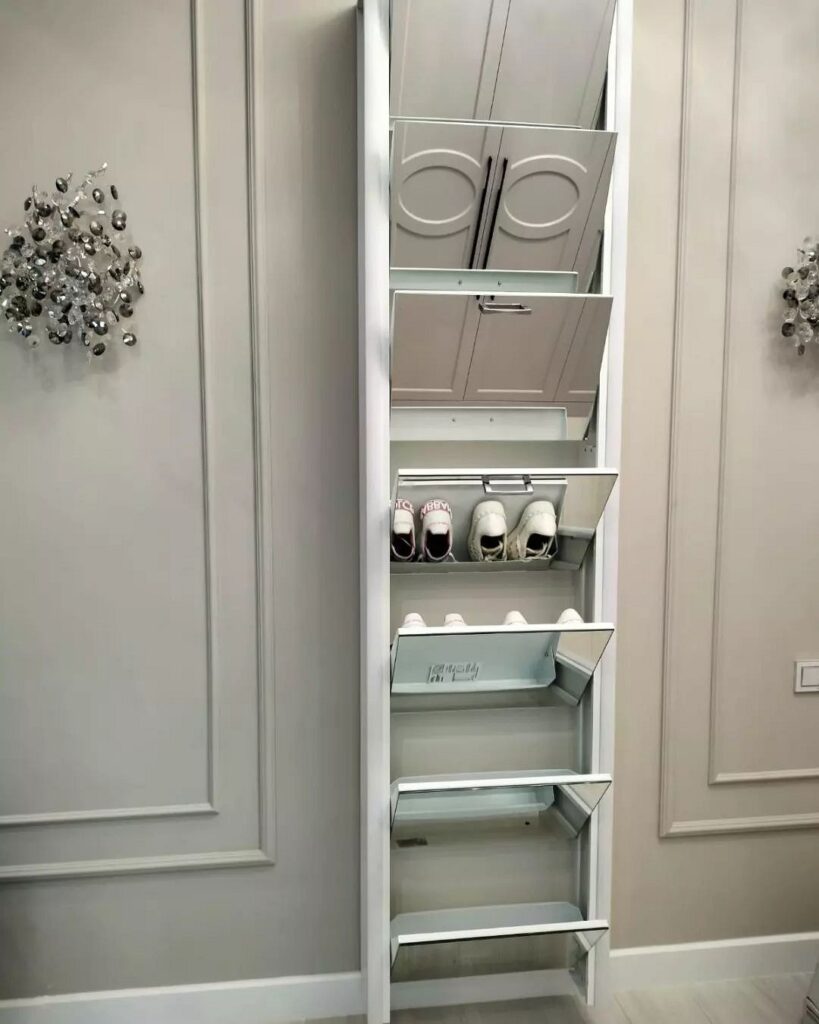

How to Incorporate Furniture into Your Interior
Any piece of furniture fits into an interior using one of two schemes: as an inconspicuous object or as an accent.
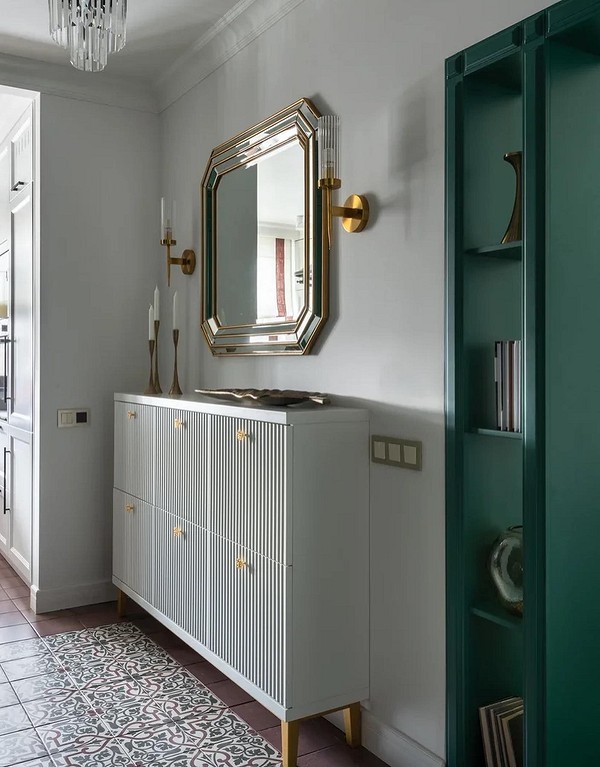
In the first scenario, the preference is for sleek models in neutral shades. The more precisely it matches the color of the finishing, the more the storage system “blends” into the space. This is particularly relevant for small or simply narrow hallways. Also, remember that light colors visually appear more airy.
If the shoe cabinet is to be an accent piece in the interior, you can choose any bright color or interesting texture. Unusual painting, colored glass, and decor are acceptable. The main thing is to integrate such an item into the overall style and find at least a couple of companions in color, shape, or design.
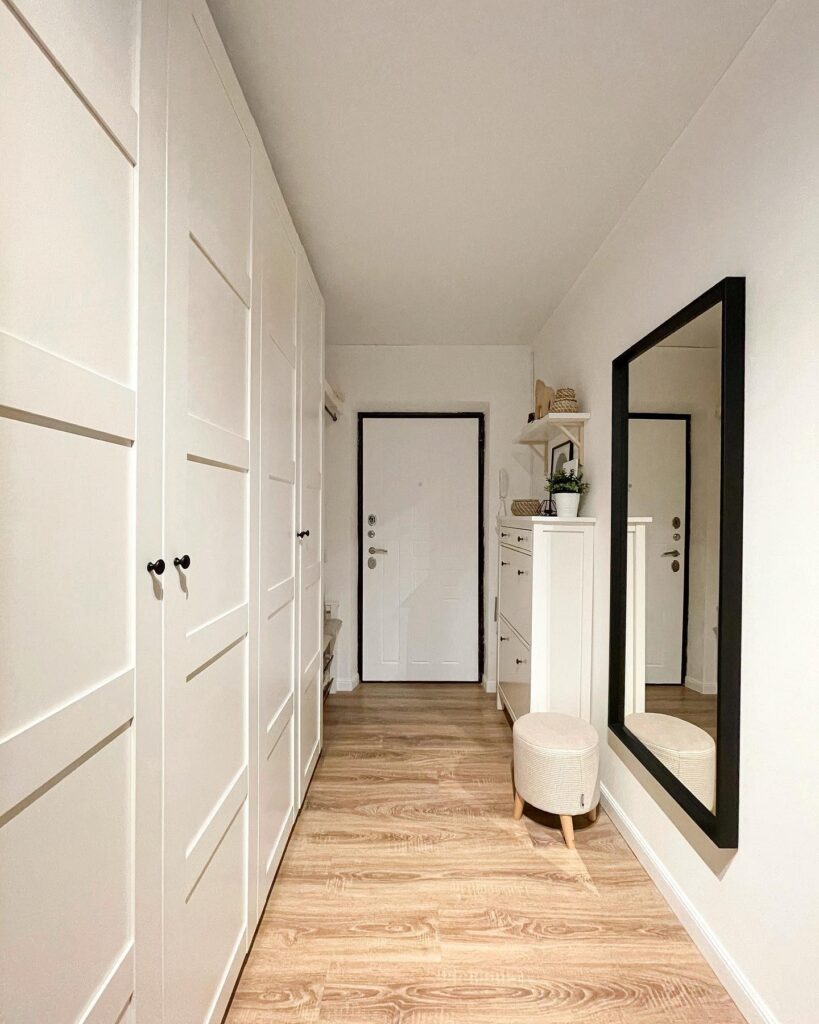
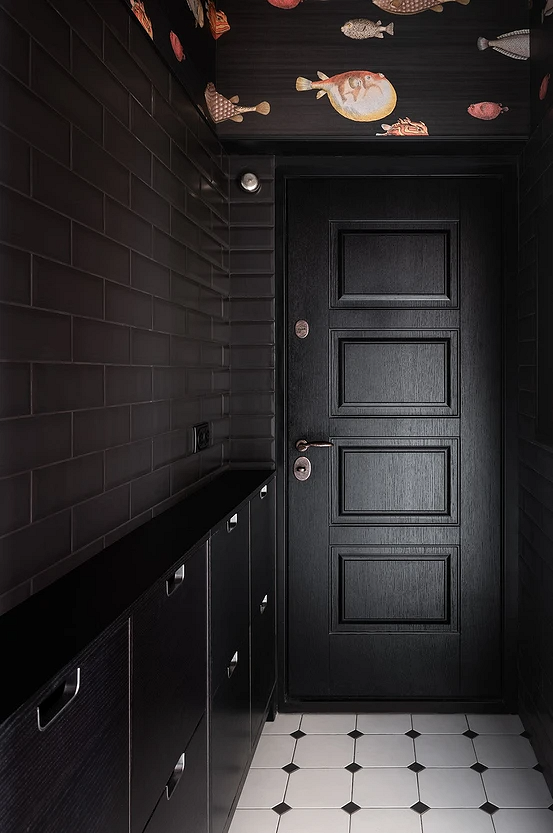
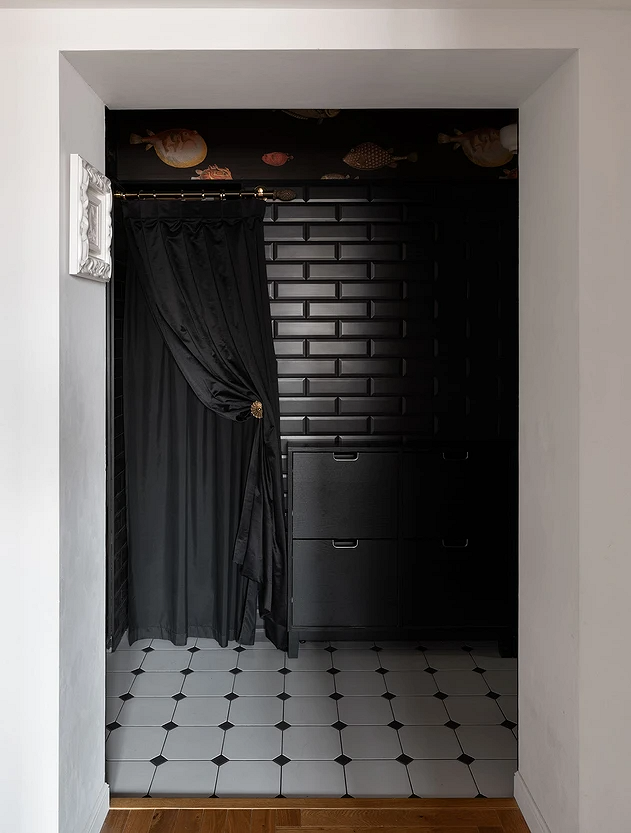
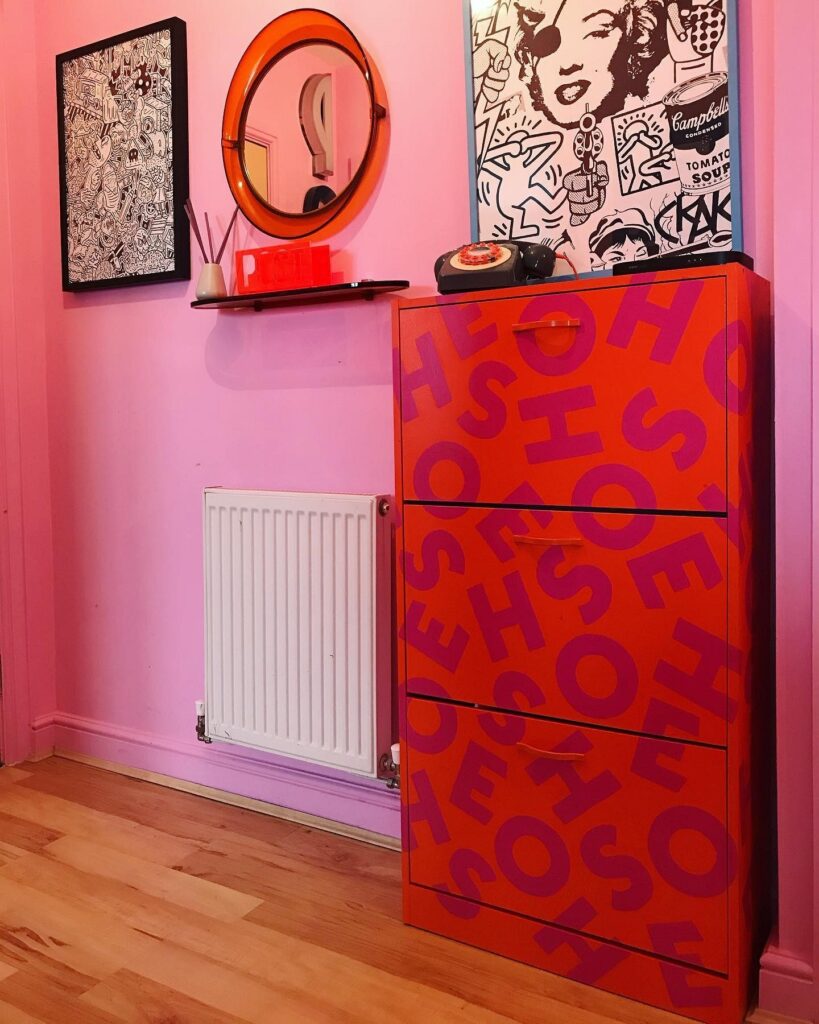
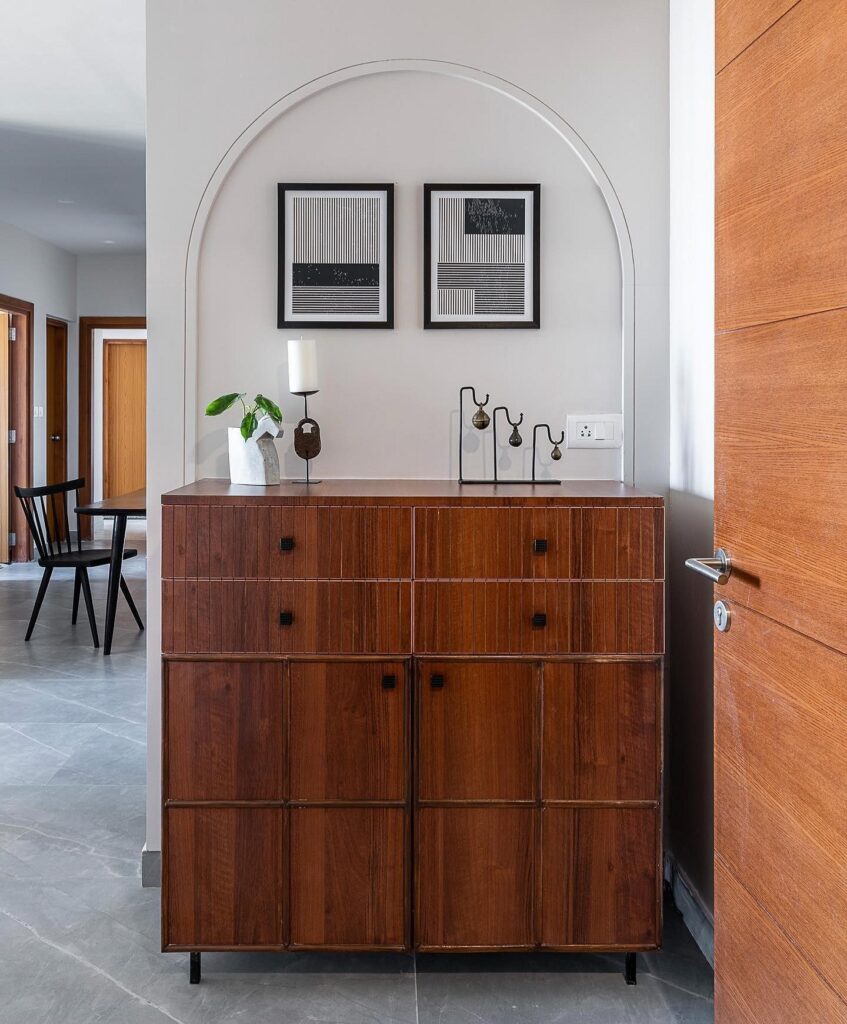
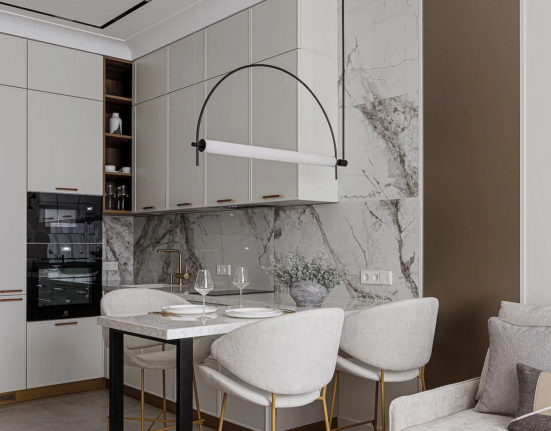
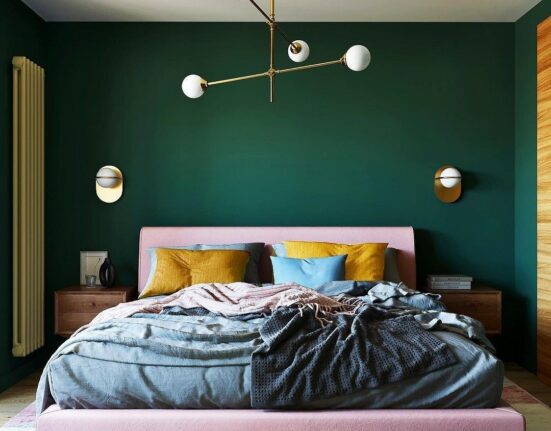
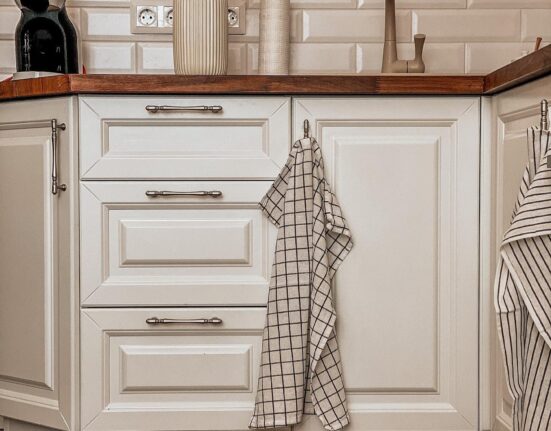
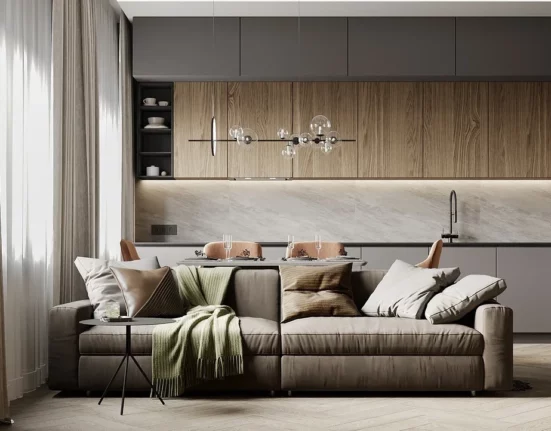
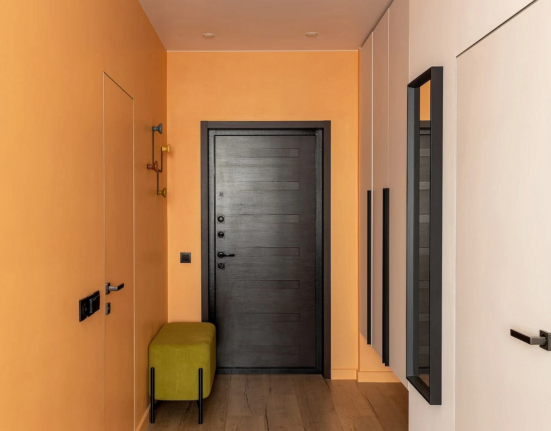
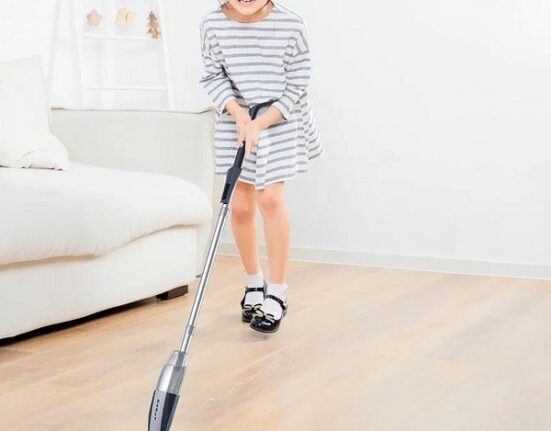
Leave feedback about this